

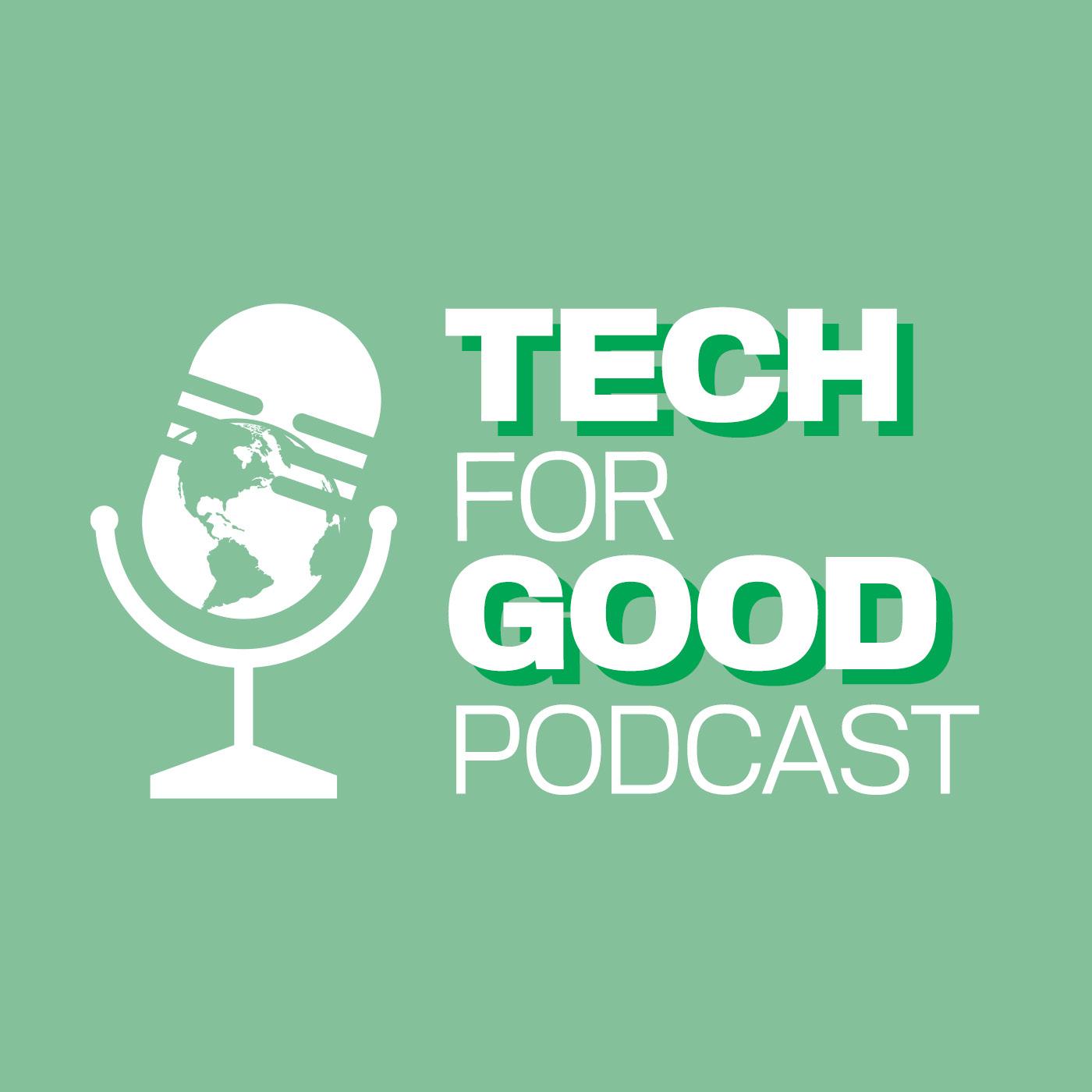
Hello and welcome to the last Tech for Good magazine of this calendar year, and my first as Managing Editor. We are seeing out 2022 with a bumper issue, including a hotly anticipated front cover case study from the City of Philadelphia’s Office of Innovation. We detail how the city leveraged the strength of public-private partnerships to provide internet access to thousands of households and children at a time of great need, to achieve digital equity. Healthcare was without doubt the foremost sector forced to transform during the pandemic, and HSCNI (Health and Social Care Northern Ireland) shares its story about how digital technologies helped protect the population during those unprecedented times. Following these varied stories on how organisa tions navigated through a public health emergency, we sat down to interview what3words on how its location app
SAM JERMY Managing Editor

harnesses the power of technology to precisely pinpoint any spot in the world, by using 3 metre grids and an algorithm to find friends in the park, deliver a pizza, or save lives in a medical emergency. From an education perspective, it is a sector that has had to completely transform into the virtual world in recent years. Cypher Learning, a cloud-hosted learning platform, tells us how the growth in education technology has become exponential. Rounding up this month’s offering, we get insight from SAP and the Wildhearts Group on a previously undervalued sector that has come to the forefront in recent years- supply chain management. We discuss how companies and social enterprises can work together to build better supply chains.
Enjoy the issue, and all the best for the new year.
PUBLISHED BY VWDA Limited, Norwich, UK Company No: 13957770
TALK TO US hello@vwda.co.uk

DIGITAL BULLETIN

06 38 SOCIAL GOOD How music resulted in a life-changing location app 06 CASE STUDY City of Philadelphia Discover how residents stayed connected at a time of need 62 ENVIRONMENT SAP Wildhearts In a volatile world, we discuss why resilient supply chains with high visibility are more important than ever 46 CASE STUDY HSCNI How technology was used to help protect the population of Northern Ireland 70
SECTOR Experts discuss fostering trust in public-sector AI 28 EDUCATION Expert Insight: Graham Glass tells us why remote learning is here to stay Cypher Learning What3words CONTENTS
PUBLIC

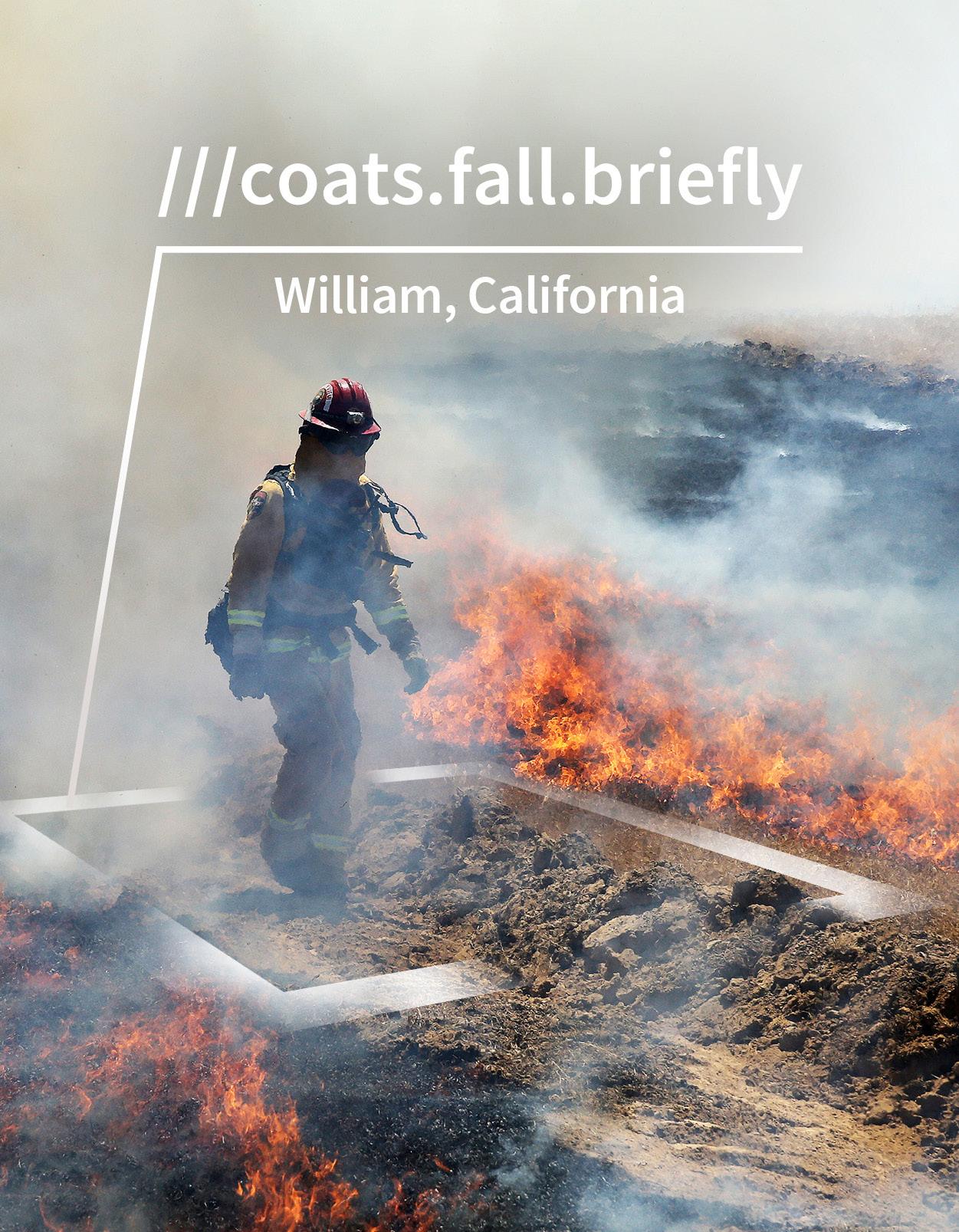

28 38 62


At the start of 2020, digital access was a commodity. Less than three months later, it became a human right, without which many were unable to access vital resources such as healthcare, banking services and education. Aware of the difficulties that affected its most vulnerable residents, the City of Philadelphia set out to close the digital divide.
Faced with an inequality gap that threat ened to set back a generation in the wake of COVID, the City of Philadelphia turned to its private partners to create a collaboration that would change millions of lives in record time. According to research conducted by the City’s administrators in 2021, 84% of residents stated they had wireless broadband internet access. However, only 63% of low-income families said they have access to a desktop, laptop or tablet.
“Governments were forced to innovate very, very quickly,” says Andrew Buss, Deputy CIO for Innovation at the City of Philadelphia. “A lot of private companies realised the significance of digital equity and felt that they had to become involved with some of that work, knowing that governments cannot do it all.”
A city for all citizens Digital equity has been a priority for the City of Philadelphia’s Office of Innovation and Technology (OIT) for over a decade. When the COVID-19 pandemic threatened to prevent a large number of children from accessing school resources, Philadelphia relied on its vast experience mastering the art of public-private partnership to help prevent that.
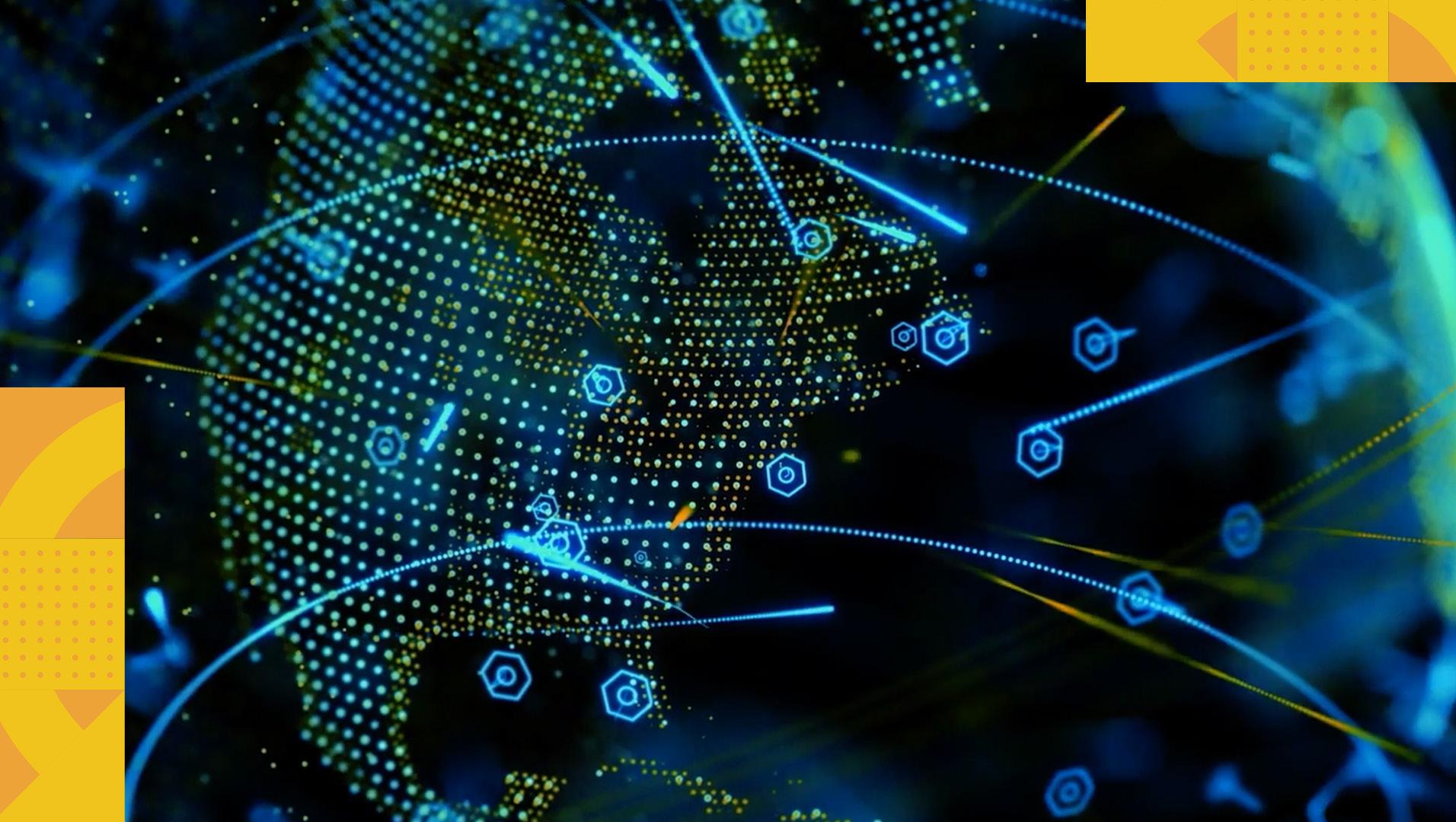
CASE STUDY TECH FOR GOOD 8
“Before the pandemic, nobody realised that we really needed to consider internet connectivity in the same way we consider other utilities,” says Juliet Fink Yates, the City’s Digital Inclusion Manager. “The internet is now as foundational to our society as electricity and heating.”
Although Philadelphia’s classrooms effectively transitioned to a virtual environ ment, many households were unable to follow suit. The City’s team quickly realised that, although most communities in Philadelphia had broadband access, they often did not have the means to sign up for these services and provide their children with the tools they needed to succeed in a socially-distanced world.
“The pandemic really brought all of these virtual activities into every student household, whether they were ready or not,” says Ashley Pollard, K-12 Digital Access Program Manager at the City of Philadelphia.

PHLConnectED was the City’s solution to the challenge. The program provides free, consistent and reliable internet access to pre-K–12 student households. To achieve this, the City brought in support from all fields, from ISPs to non-profit organizations, united with the goal of helping those most in need at a critical point in history.
It was an instant success. By the end of the first year, the City of Philadelphia and its private partners had enabled over
CITY OF PHILADELPHIA ISSUE 21 9
We know it has saved lives”
Juliet Fink-Yates

18,700 connections. Now, two years later, the program includes grants for schools, as well as digital skill classes and a multilin gual 24/7 hotline that provides information about the initiative and conducts eligibility screenings. To date, this successful public-private partnership has enabled over 22,500 connections.
“Partnering with private companies is really necessary for governments,” Buss says. “We are often expected to do a lot of things, and we do not always have the expertise, the resources and the knowledge to do some of them.”
Philadelphia’s commitment to partner ship has taken shape in the form of the Digital Literacy Alliance (DLA), a group of institutional stakeholders tasked with bridging the city’s digital divide. The initiative brings together non-profit organi zations like United Way as well as industry partners such as Comcast, Verizon, AT&T
and T-Mobile, to provide funding and strategy for innovative digital inclusion projects programs across the region.
In the past six years, the Alliance has provided about $200,000 in yearly grants to fund innovative digital literacy projects. One of the most successful is the City’s Digital Navigator Program, where digital support staff provided one-to-one dedicated support to households around accessing and using technology. The City, through the OIT and the Office of Children and Families, has supported a public computer centre
CASE STUDY TECH FOR GOOD 10
network which ensures residents can easily access computers all across the city.
“When we shrink the digital divide, we enable people to access all the benefits and services that the government and the community have to offer them,” says Fink Yates. “We know it has saved lives.”
The City of Philadelphia wants to ensure that no person is left behind in the transition towards a digital society. For this reason, it has crafted a digital equity plan that will provide residents with access to affordable devices, internet connectivity and digital skills. But achieving this ambi tious goal requires the sort of extensive expertise and support that only the private sector can provide.

T-Mobile: towards ten million In 2020, having recently completed the acquisition of Sprint, as well as a $9bn investment into low-band 5G spectrum, T-Mobile was in a strong position to provide internet access to those in need. During the worst of the COVID crisis, the company was able to rise to the challenge posed to it by the City of Philadelphia: Make sure all the city’s children could attend virtual lessons.
“At the start of the pandemic, we knew that the communities impacted the most would be the ones that were historically underrepresented,” says Dr. Kiesha King, National Education Administrator at T-Mobile. “As a company, we needed to step in and take action right away.”
CITY OF PHILADELPHIA ISSUE 21 11
T-Mobile is no stranger to partnerships with public organisations. In 2016, the telecommunications giant collaborated with the Philadelphia Housing Authority through the ConnectHome program, designed to provide devices to 2,500 low-income families. That same year, T-Mobile launched a national initiative called EmpowerED, which offered funding and hardware to school districts. When the
pandemic hit, the company knew it had to aim much higher, and pledged to invest $10.7bn to connect 10 million students across the country to the internet over the next five years, in what became known as Project 10Million.
To achieve this goal, T-Mobile and the City of Philadelphia set up distribution centres all around the city, where families could pick up Wi-Fi hotspots and instruction
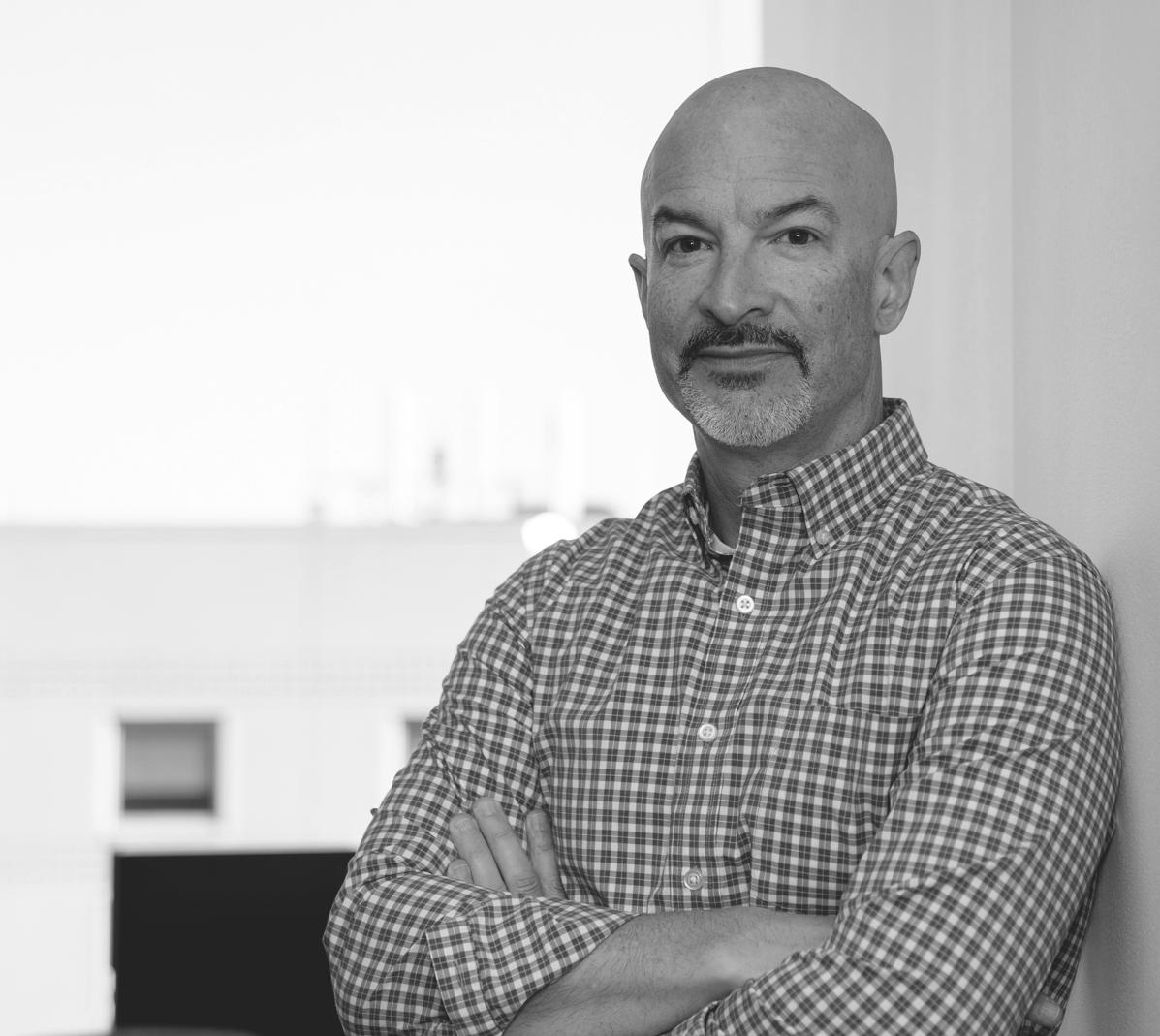
smart
digital equity”
I’m not sure you can have a
city without
CASE STUDY TECH FOR GOOD 12
Andrew Buss
manuals in 11 different languages. Shane Brody, the company’s Senior Digital Inclusion Specialist, even turned his garage into a “hotspot distribution centre” for a few months. Once PHLConnectED launched, eligible students could continue to get a mobile hotspot through district distribution centres, their Charter school, or through a selection libraries.
“Everyone at T-Mobile was working extremely hard to help those that needed help the most,” he says. “We said: ‘Anyone who needs a connection, T-Mobile is going to support it, whether that be through a hotspot through an embedded Chromebook or a connected tablet. Within that a two-week timeframe, we rolled out thousands of these in Philadelphia alone.”
The City of Philadelphia’s Ashley Pollard celebrated T-Mobile’s commitment to ensure that the city’s children had the capacity and bandwidth to participate in online education. “The critical piece that led us to partnering with T-Mobile is that they had the best pricing for their hotspots that offered the highest data capacity, as well as unlimited data and access,” he says. “We didn’t want to run into issues of limited data or caps.”
However, education does not end with schools. Another one of the City of Philadelphia’s landmark digital equity programs is the Free Library, which loans hotspots via funding from the FCC and through the PHLConnectED programme, allowing residents to access the internet

CITY OF PHILADELPHIA ISSUE 21 13
Serving all students
The COVID-19 pandemic accelerated changes already underway in higher education, including a reduced pool of “traditional” students, an increasing societal need for lifelong credentialing and skilling, the rise of alternative education providers and changing student expectations. For many colleges and universities, succeeding in this context means both improving service to existing students as well as pivoting to serve new student segments across the learner lifetime. Doing this well means understanding learners’ varied journeys and motivations.
www.accenture.com


from anywhere in the city with the support of T-Mobile. To date, the program has enabled over 13,000 connections, helping residents access a variety of opportunities, from telehealth consultations to job inter views and skills workshops.
“Our work with the City is going to make sure that families don’t just have a network and a device, but they’re empowered to be able to use that to live a different life than they would have before,” says Dr. Jeff Carlson, K-12 Education Advisor at T-Mobile.
“It’s about making sure that, no matter where they are, Philadelphians have a network that’s going to get them connected to the world around them.”
Accenture: A for access
When public and private entities work together, they can leave a lasting impact
Engaging with underserved communities was really critical to our strategy”
Sarah Amendolare
on innumerable lives. But materialising life-changing projects requires resourc es, something that was in short supply in the summer of 2020, when the City of Philadelphia was designing its ‘back to school’ operation. Enter Accenture.
“The pandemic has helped governments understand the importance of collaboration and partnership,” says David Davies, Client Account Lead at Accenture. “In a crisis situation, government needs to be able to request help when they need it.”
Accenture was especially well-placed to help the City of Philadelphia tackle the challenge of ensuring digital equity. The company had previously partnered with the Department for Labor and Workforce

CASE STUDY 16 TECH FOR GOOD

CITY OF PHILADELPHIA ISSUE 21 17
to redesign government services in a more accessible and user-friendly way, and its dedicated education practice of over 500 professionals has helped hundreds of clients across the world improve student outcomes and experiences.

“COVID-19 really disrupted education across the globe, and of course, across America,” says Sarah Amendolare, Strategy and Management Consulting Manager at Accenture. “Engaging with not only the schools, but the communities and, specifically, underserved communities was really critical to our strategy.”
Christiane Reinhold, Management Consulting Manager at Accenture, adds: “People have now gotten an idea of what they want from government: they want access, and it should be easy, it should be
fast - the only way to do that is to bring in the private sector.”
Accenture’s main role within the City’s pandemic response was to offer program management and implementation support the PHLConnectED program. From devel oping a program management plan with ISPs to creating the necessary materials for virtual lessons, the Accenture team was part of every step of the project, becoming vital to its success.
“In two months’ time, we needed to coor dinate multiple large institutional partners to develop and launch this brand new citywide program before the start of a school year, and ensure that every student had a way to get access to the internet as quickly as possible,” says Fink Yates. “We could not have done it without Accenture.”
CASE STUDY TECH FOR GOOD 18
Ending the digital divide is a huge effort that requires early intervention. In addition to supporting the City of Philadelphia, Accenture is increasing the quality of education children in the area receive by partnering with schools that serve commu nities in need. The goal of this initiative is to launch innovative early-education centres throughout the Commonwealth that they hope will help break the cycle of poverty.
“To have opportunity to work alongside government to better serve their constituents is just really rewarding work for us,” says Kevin Brown, Client Account Lead at Accenture. “For me, it’s a joy to bring to our clients the best of Accenture, to give them the tools they need to better carry out the work they do, which is often essential.”
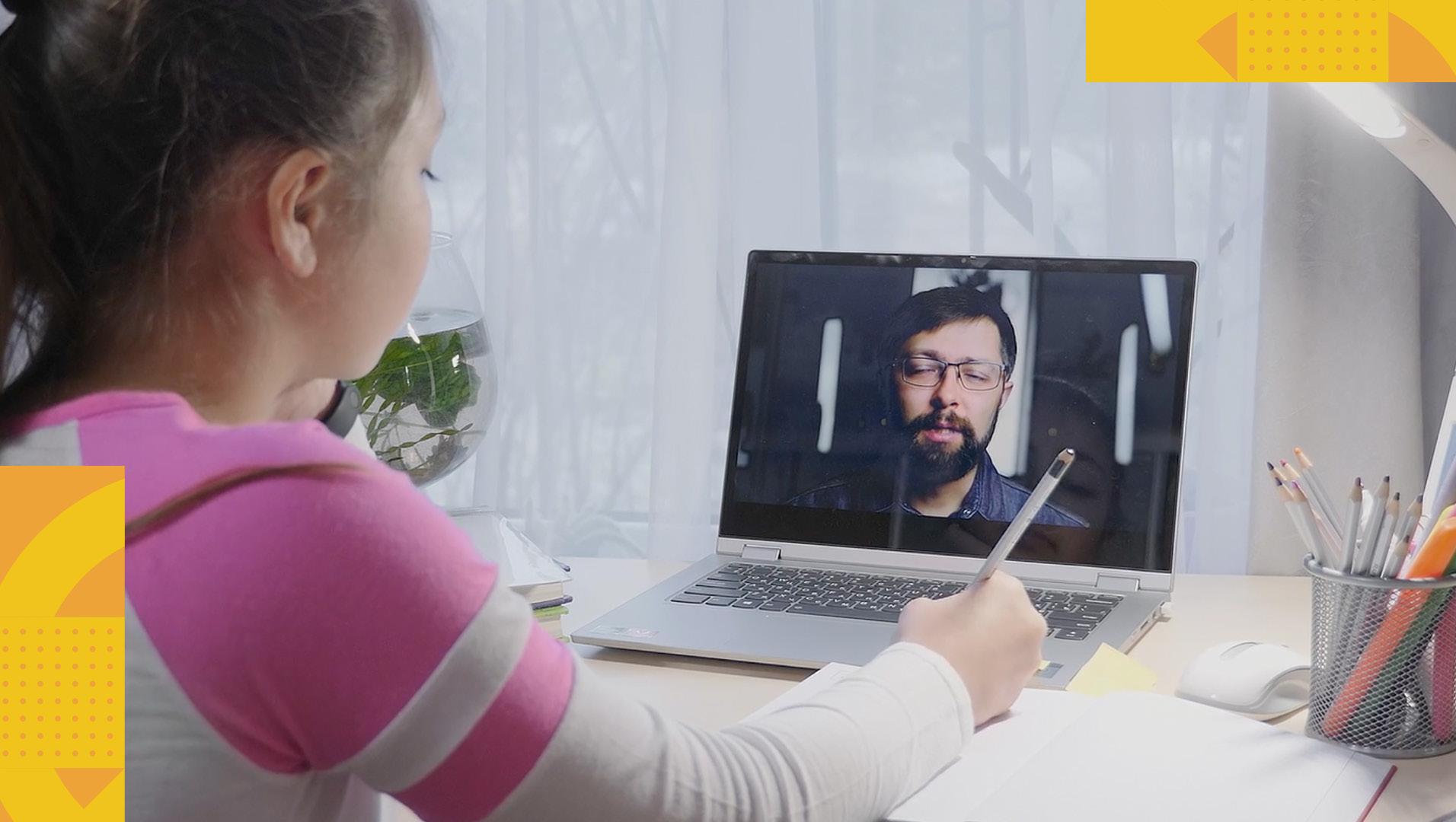
Verizon: a community-wide enterprise Education is key in the building of a revitalised and more accessible society in the post-COVID world. However, it is not necessary to wait until today’s children’s become adults before promoting solutions that foster innovation and digital skills with in a community - a lesson that the City of Philadelphia’s partners took to heart.
As one of the world’s leading providers of communications services, Verizon has been an active partner in policies that enable broadband expansion across the United States. During the pandemic, the company provided grants for small busi nesses, and promoted projects such as the Verizon Innovative Learning Program, that aims to train 10 million young people with
CITY OF PHILADELPHIA ISSUE 21 19


FREE INTERNET ACCESS FOR ELIGIBLE K-12 STUDENTS SIGN UP TODAY T-Mobile.com/P10M
eligibility based on National School Lunch program. Accepted evidence of eligibility includes or proof of enrollment in other qualified government programs such as (but not limited to): Supplemental Nutrition Assistance
via P-EBT or EBT, Temporary Assistance for Needy Families (TANF), Food Distribution Program on
Reservations
Community Eligibility Provision (CEP), Medicaid, Head Start, Foster youth, migrant,
or runaway
per year free on our network. Availability limited.
for details.
the
Student
Program (SNAP)
Indian
(FDPIR),
homeless,
youth. One per household. 100 gigabyte
See rep or T-Mobile.com/Project10Million
T-Mobile, the T logo, and
magenta color are registered trademarks of Deutsche Telekom AG. © 2022 T-Mobile USA, Inc.

new digital skills by 2030, allowing them to fully participate in society’s digital future.
“Participation in the digital economy is essential in just about every aspect of our lives,” says Pedro Romero, Verizon’s Director of Government Affairs. “We at Verizon continue to work on closing the digital divide by focusing on creating and making available world-class broadband networks.”
Due to their common commitment to fostering innovation and helping underserved communities obtain digital skills, the partnership between Verizon and the City of Philadelphia was a perfect match.
“We’ve partnered with Verizon to create an external innovation fund,” Buss says. “We are seeding ideas from outside city government, seeing how they work and then potentially bringing some of that technology inside city government.”
FLIE focuses on creating a dynamic ecosystem across the city where innovative ideas can be piloted, and founders receive the expert mentoring and funding they need to make their ideas a success.
“FLIE is a perfect example of how collaborations between city governments and companies can help local businesses,” Romero says. “This synergy between public and private partners creates the perfect environment for innovation within the public sector.”
If you have access to a broadband connection, good things do happen”
Eric Fitzgerald Reed
As technology advances, it disrupts the job market. For a community to not only survive, but to thrive in the digital era, all of its members need to be able to access the internet, whether that is for healthcare, education or professional purposes.
The goal of the Philadelphia Fund for Leadership, Innovation, and Entrepreneurship (Philadelphia FLIE) is to become the missing link between public administrations and local innovators to help solve the city’s most pressing challenges.
In partnership with Verizon, the City of Philadelphia has also launched a project to redevelop the City’s traditional public computing centres to create public computer centres. From accessing school to taking consultations with doctors, these centres have been created as spaces that allow every citizen to be connected to the
CASE STUDY TECH FOR GOOD 22
digital world through technological devices and high-speed connectivity.
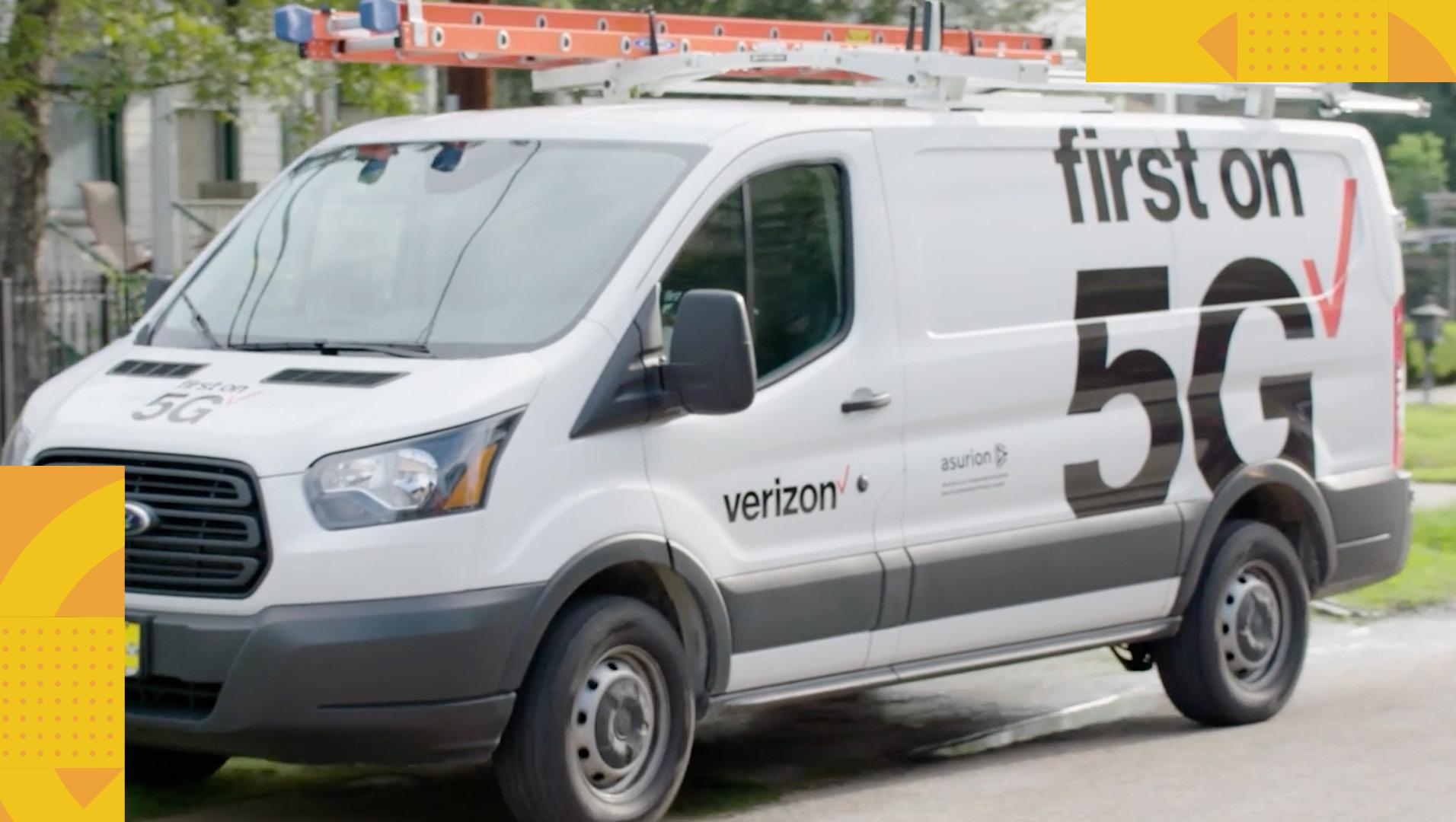

“If you have access to a broadband connection, good things do happen,” says Eric Fitzgerald Reed, Vice President of State Government Affairs, Pennsylvania and Delaware at Verizon. “These centres provided a much needed resource at a time where people were just confused or intimidated by technology. They opened its doors to make sure that people felt included and had a place to go to for their connectivity needs.”
If the FLIE program provides the opportunity for entrepreneurs to collaborate, the City’s public computer centres offer venues where those ideas can flourish, transforming the city of Philadelphia into a place where innovation is not a privilege, but a norm - all thanks to the power of partnerships with the private sector.
CITY OF PHILADELPHIA ISSUE 21 23
We are united in building a brighter future for everyone.




CASE STUDY TECH FOR GOOD 26
Connecting the future
As society becomes increasingly complex and connected, challenges also become less siloed, and need to be addressed from multiple perspectives. When a global epidemic threatened the future of the mil lions of residents of Philadelphia, the City’s established relationships and willingness to collaborate kept the worst-case scenario at bay and helped prepare a generation for a digital future.
“The City of Philadelphia and the School District of Philadelphia are second to none when it comes to bridging the digital divide,” says Dr King. “What the city did is take their school district, non-profit organ isations, companies, and bring them all together to create connectivity for all.”
“I’m not sure you can have a smart city without digital equity,” Buss adds.
During times of crisis, the desire to help the most vulnerable prompts governments and private organisations to take action. Thanks to the success of these partnerships, the residents of Philadelphia were and will be able to take advantage of the many opportunities the digital era provides. In five years’ time, the City envi sions a scenario where no Philadelphian has to worry about whether they’ve got a device or an internet connection, and the country as a whole has embraced digitalisation in a way that is inclusive and accessible for all.

CITY OF PHILADELPHIA ISSUE 21 27
A+
IN AI
Remote learning is here to stay. We speak to Graham Glass, founder and CEO of Cypher Learning, to find out how education initiatives can leverage technology to become the best in class.
AUTHOR: Beatriz Valero de Urquía
EDUCATION TECH FOR GOOD 28
ISSUE 21 CYPHER LEARNING 29
an education evolve?
The virtual world is fairly new, but for the new generations growing up today, it is all they know. Although education systems around the world are based upon traditional methods and centuries-old curricula, when the COVID-related lockdowns forced schools to shut down, they also offered the opportunity to rethink the way that we educate the leaders of the future.
Even before a pandemic paralysed the world, there was already significant growth in the adoption of education tech nology. In 2019, the edtech market was valued at $18.66 billion and predicted to reach $350 billion by 2025. COVID, of course, completely altered these predic tions, as 1.2 billion children in 186 coun tries were affected by school closures and transitioned to mostly digital education methods. The drastic move to online learning caught many teachers by surprise, but not Graham Glass.
“I’ve always felt that it was inevitable that there’d be more and more use of tech nology in teaching and learning,” he says.
Glass is an innovator, a computer scientist and a former teacher. In 2009 he became the founder and CEO of the company now known as Cypher Learning, a cloud-hosted learning platform used by over 20,000 organisations and available in 40 languages. Currently, it is the only edtech organisation that offers remote
technology in teaching and learning”
learning services to schools, universities and businesses alike.
Glass delivered his first lecture while he was doing his graduate studies in the US. Speaking to Tech For Good, he recalls how he fell in love with teaching and what motivated him to create a platform that would allow people to continue educating themselves all throughout their lives.
“I had no background or teaching qualifications; nothing,” he says. “But I was really good and enthusiastic about Computer Science, so I said, ‘Okay’ and I gave my first lecture. My notes were on the back of an envelope, that was my entire preparation. But it went incredibly well. I couldn’t even sleep at night, because it was just so enjoyable.”
I’ve always felt that it was inevitable that there’d be more and more use of
C
EDUCATION TECH FOR GOOD 30
From then on, Glass stayed at the University of Texas as a lecturer. However, he soon realised that it wasn’t just the young university students wanting to learn about Computer Science. Companies across the world were growing their digital presence and needed to skill up their workforces. It was then that he founded ObjectLesson, with the goal of teaching the same concepts he taught in class but to corporations all over the United States.
Glass had a restless mind, and soon after he also started a software company, webMethods. After successfully growing and selling this organi sation, Glass set out to return to the education sector, but this time with a new and innovative proposition.
“I had to decide what to do with some of the money that I made from the acquisition and my interest in education, and that’s when I decided to start Cypher Learning,” he says. “It’s all about making it easier for people to teach or learn using web technologies around the world. But it’s also advanced technology - we’re getting involved in artificial intelligence in areas like thatso it’s really a perfect match for me.
“I absolutely love teaching. I still do teaching, but now I can focus on the edtech marketplace.”
Decades before COVID began, Glass was able to identify the many benefits that come with flexible and remote learning. Research has shown that, on average,
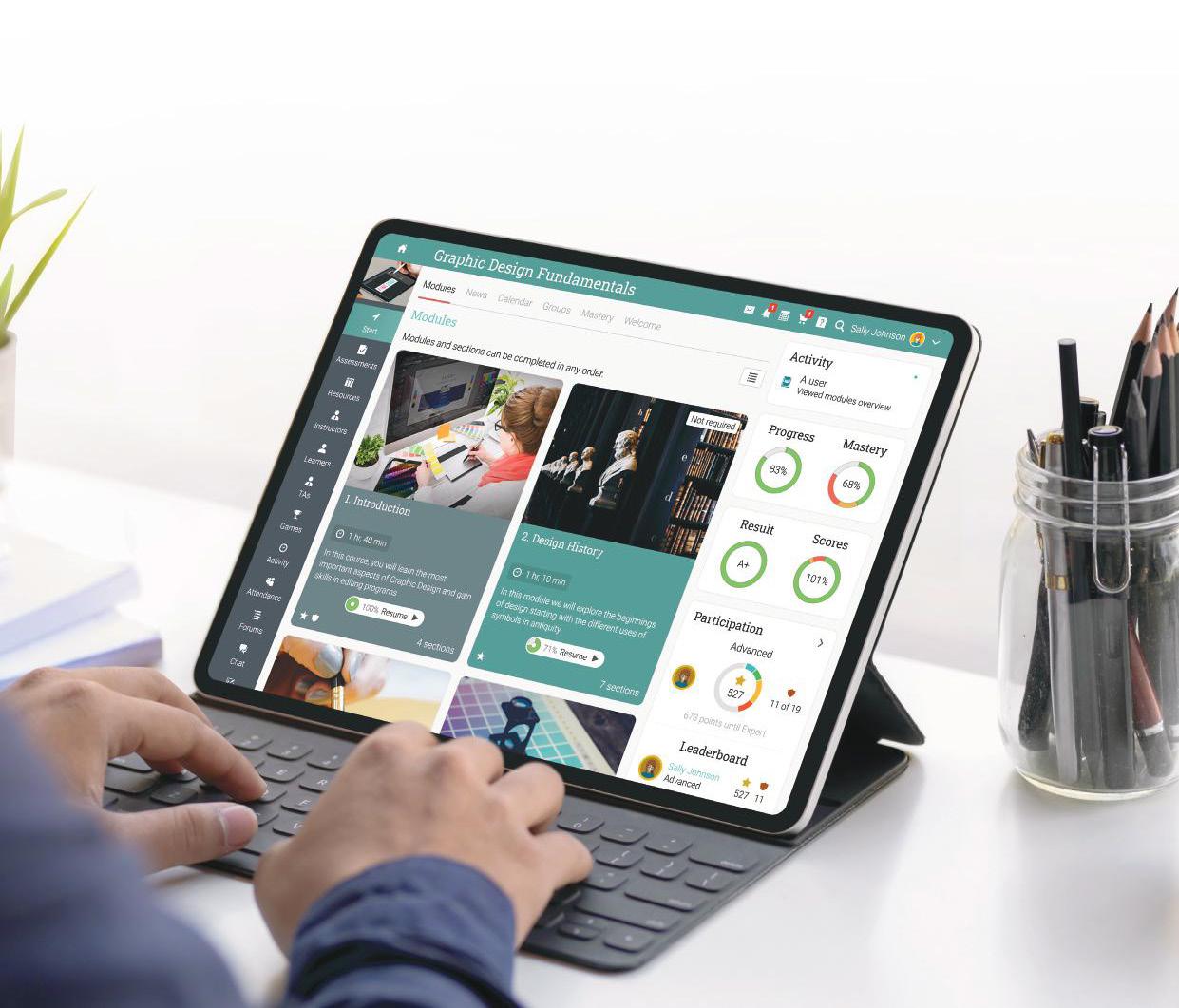
ISSUE 21 CYPHER LEARNING 31
students retain 25-60% more material when learning online compared to only 8-10% in a classroom. This is explained by the fact that e-learning requires 40-60% less time to learn than in a tradi tional classroom setting because students can learn at their own pace, going back and re-reading, skipping, or accelerating through concepts as they choose.
It was Glass’ experience teaching students and professionals alike - as well as his young son - that made him realise the need for educational tools to be both interactive and able to adapt to the learner’s pace and interests.

“The idea that you’re all learning the same thing, in the same moment in time, at the same pace, it really just doesn’t make sense,” he says. “But, because we’ve done it for so long, it’s really hard to break free. Education technology, if it’s done right, can really improve the way that things run.
“The pandemic was terrible but it did accelerate the adoption of technology. It was going to happen anyway, but it helped people realise that this is quite important. And we were working with governments around the world to design these kinds of disaster-proof education
EDUCATION TECH FOR GOOD 32
systems because, sadly, this is not going to be the last time something like this will happen. So now people are starting to prepare for it better.”
The rise of edtech has transformed all types of education, not just children’s. While most learning platforms focus on one market, whether that its business, higher education or independent learning, Cypher Learning does all three.
The company has created a single underlying platform but has three different branded versions, aimed at the three main edtech markets. This way, Neo focuses on schools and universi
ties, Matrix is designed for businesses, and Inside LMS is built for entrepre neurs. The company’s revenue is split evenly across the three sectors. But, while they’re different, they all have the same values in common: making educa tion accessible and interactive.
“We figure that for a tech platform to be useful, first of all, it’s got to be beautiful and elegant,” Glass says “And that’s really rare in this marketplace. Many of these learning platforms might have a lot of features, but they look like they were designed back in the 1980s. So ours is kind of like the Apple of learning management systems. It’s really beautiful, but that’s only the starting point.
“One of the biggest problems that teachers face is keeping students

Education done right is one
experiences”
of the most incredibly engaging
ISSUE 21 CYPHER LEARNING 33
engaged and providing courses that can be consumed asynchronously, where the teacher and the student and not in the classroom at the same time. So, in addition to all the bread and butter things - assignments, grade books and lessons - there are two features that we really excel at: automation and gamification.”

The idea behind automation is that teachers can design a system by which, when a certain condition is met, it auto-
matically triggers a certain set of actions. This could be a celebratory message when a lesson is completed or the reveal of hidden advanced materials and recommendations about possible topics of interest that keep students engaged even when the teacher is not overseeing the learning process in real-time.
In addition, the gamification part makes sure that the learning experi ence is enjoyable, by creating levels
EDUCATION TECH FOR GOOD 34
and tasks to complete that block new badges and features. Initially, Glass was not convinced that this feature was going to make a difference, but he was proven wrong.
“I wasn’t sure if this was actually going to be enjoyed by kids,” he says. “But the answer is ‘yes’, they absolutely love this stuff. We actually interview a lot of people that use our platform and the students said that before they went to bed, they would check if they were at the top of the leader board, and if that wasn’t the case, do a few extra tasks.”
With this new model, Cypher Learning aims to show that remote learning is not just about teaching the same way but through a video platform, but actually rethinking the way we teach, and transforming education into a fun and interactive process. The children already demand it.
And I think education done right is one of the most incredibly engaging experiences.
“It’s all about how to make education fun because that should be the default. It’s not some aberration. Teaching and learning should be really good fun. But I think one of the unfortunate things is a lot of teachers have had a bad early experience with platforms that are clunky or don’t do these things. And so, I can kind of understand why they get a bit disillusioned. But automation and gamification are two things that we have the best in the world, and that is really helping people using our platform.”
I tend to look at the future and then work back from there”
“You have to think about your customers per se, children who are immersed in real-time video games and games, and TikTok, and all of these things,” Glass says. “They have a reasonable expectation at this point that things are going to be engaging.
However, it’s not just children that enjoy these new learning methods. Cypher Learning has also been very successful in the enterprise world, and it uses its own products for its own internal training. For the past 10 years, the company has been completely distrib uted, and so being able to train the team in a common and entertaining way has been a vital part of the organisation, even before COVID came into the picture.
ISSUE 21 CYPHER LEARNING 35
Now, Cypher Learning is working on Intelligent Learning, an upgrade that will introduce learning goals independent from the courses a student is taking. The programme will be able to track progress in different competencies and recommend resources, both internal and external. Moreover, the system will also track learning objectives and self-test results to help students on their journey towards mastering a specific subject. Similarly,
teachers will be able to use AI to predict grades or identify students that are falling behind on their learning objectives and that might need additional support.
These competencies are wide-ranging, incorporating hobbies and school subjects - such as music, biology, etcbut also specific job titles, helping people master new skills and connect them to subject matter experts to develop the competencies required for any profession.

EDUCATION TECH FOR GOOD 36
“I tend to look at the future and then work back from there,” he says. “I think, generally speaking, these platforms are going to become smarter and more proactive, and they’re going to be viewed as kind of your learning assistants.”
The coming generations are digitally native. For them, interacting in the virtual world will be second nature and thus, education curriculums need to make sure that they are utilising all the
benefits that new technologies bring in order to foster children’s love of learning and encourage them to continue pursuing it throughout their lives. Our current world is in constant change and thus, learning never stops. The rise of educational technologies is ensuring that knowledge and expertise are no longer restricted to a few people with time and resources, but accessible to all, anywhere, anytime.

ISSUE 21 CYPHER LEARNING 37
WHAT3WORDS
The location app is riding a wave of publicity as the ubiquitous nature of the solution becomes helpful to multiple sections of society.
 AUTHOR: Sam Jermy
AUTHOR: Sam Jermy
THE LIFESAVING AND LIFE-CHANGING LOCATION TECH ENVIRONMENT TECH FOR GOOD 38

ISSUE 21 WHAT3WORDS 39
hris Sheldrick worked in the music industry and had trouble getting his bands and equipment to the correct location for gigs. He never imagined that the solution he would develop would go on to changeand save - lives.
Almost a decade later and that is exactly what has happened with the creation of what3words. By mapping the world with three-metre-square boxes and an algorithm, the company allows individuals and organisations alike to navigate the planet with nothing more than three randomly generated words. Now expanded into 53 languages and multiple sectors, what3words is hoping to proliferate even further.
Lightbulb moment
Giles Rhys Jones, Chief Marketing Officer at what3words, recalls: “Chris was constantly frustrated with poor addressing. If he was trying to find gate 27C at the NEC arena in Birmingham, or he was trying to find a remote chateau in northern France, simple street addressing wasn’t accurate enough.
“He tried using GPS coordinates, latitude-longitude, which are brilliantly accurate and cover the world. But it turned out drummers and roadies are not predisposed to remembering or writing down all those numbered

coordinates. Speaking with a friend, they asked: ‘well what happens if we use words instead? How many words would you need?’”
They worked out that if the world was cut into three-metre squares, it would divide into 57 trillion pieces. With roughly 40,000 words in the English language, combinations of three words per square would cover the globe. The algorithm was written; rude words were carefully removed, along with hyphenated words and homophones, while complicated words were shuffled to less populated
C
ENVIRONMENT TECH FOR GOOD 40
We want to make the world less frustrating, more efficient, and safer”
places such as oceans. The earliest version of what3words was born.
The next challenge in the formative journey was whether similar sounding words should be close to one another. It was decided that if a user was to make a slight error when sharing their what3words location, it needed to be immediately obvious it was incorrect rather than having nearby squares simi larly named.
“As a result, ///table.chair.lamp is in Australia and ///table.chair.damp is in USA.. That way, if I accidentally tell you
the wrong one and you’re in New York, you will be thinking: ‘hey I think you mean this one’,” comments Rhys Jones.
Multi-use expansion
Nowadays, what3words covers lan guages from Urdu and Malayan to Russian and Chinese, and is a truly global organisation with a free app that anybody can use. But as for revenue streams, income is generated through selling the what3words code to oth er companies. Commercial partners include Subaru, Mercedes-Benz, ITV,
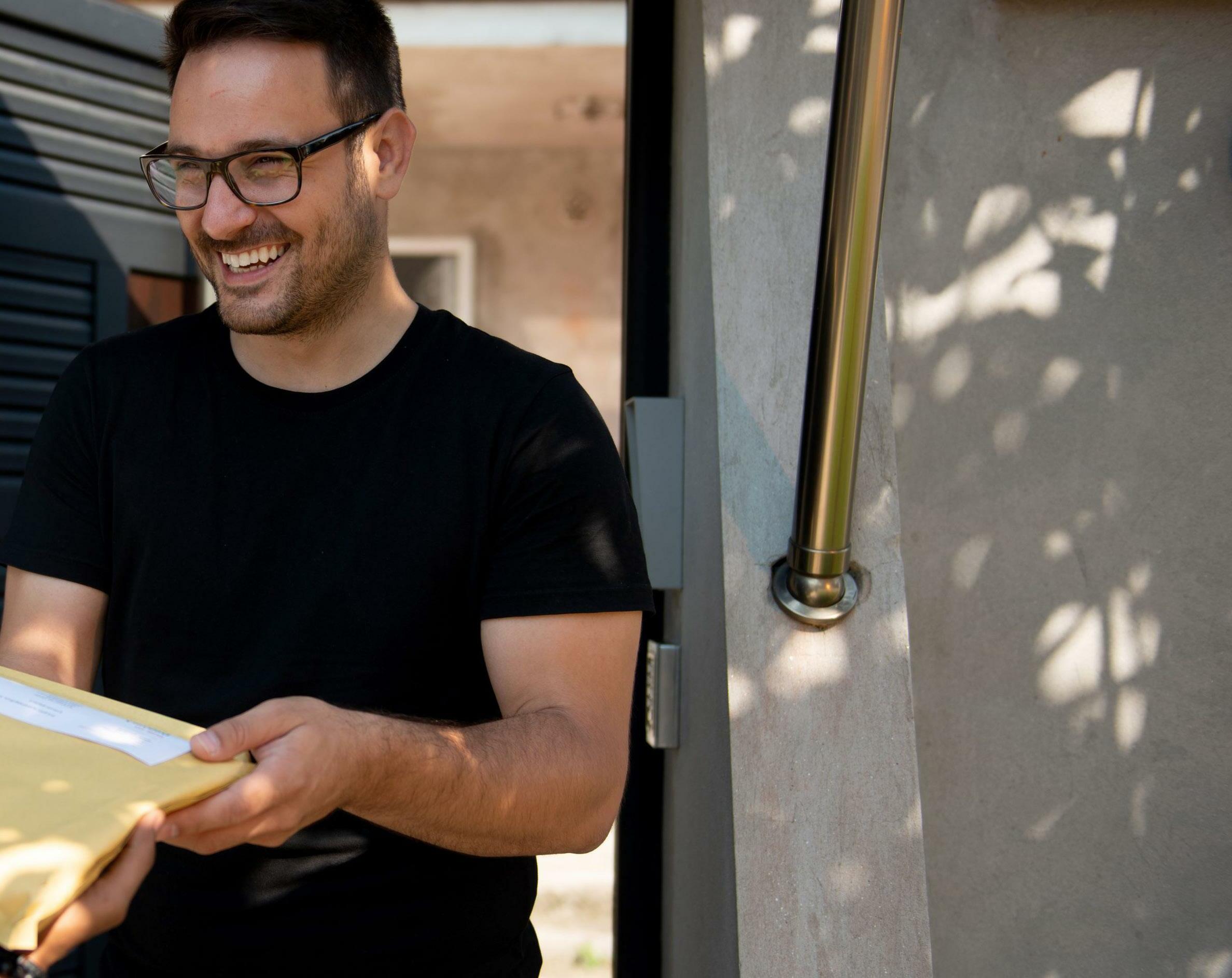
ISSUE 21 WHAT3WORDS 41
Lonely Planet, Cabify and Transport for London, among others. Having in-built car systems integrated with what3words is a particularly innovative way to help people navigate with ease, and is an area of growth for the company.
Rhys Jones adds: “If you are a delivery company, we can save you quite a lot of money by getting you to the front door. Because if you’re doing an extra 20, 30 or 40 yards on 500 deliveries a day, and you’ve got a considerable thousands-strong work force, that’s a lot of inefficiency. So, we sell our code to delivery companies, we sell our code to car companies, and it means you can get into a Mercedes Benz and say ‘hey Mercedes take me to apple/banana/spoon’, and the car system understands and navigates to the precise location.
“Because otherwise, if I want to tell the navigation system to take me to Church Road, it will say there’s 14 different Church Roads in London. Then I must pull over, check the postcode, and it can be a bit disas trous. With what3words, it takes you to exactly where you need to go.”
Even though there is a clear use case for making businesses and car travel more efficient, recently what3words has also been gaining popularity in a whole new sphere - emergency services. It doesn’t take long to unearth stories of

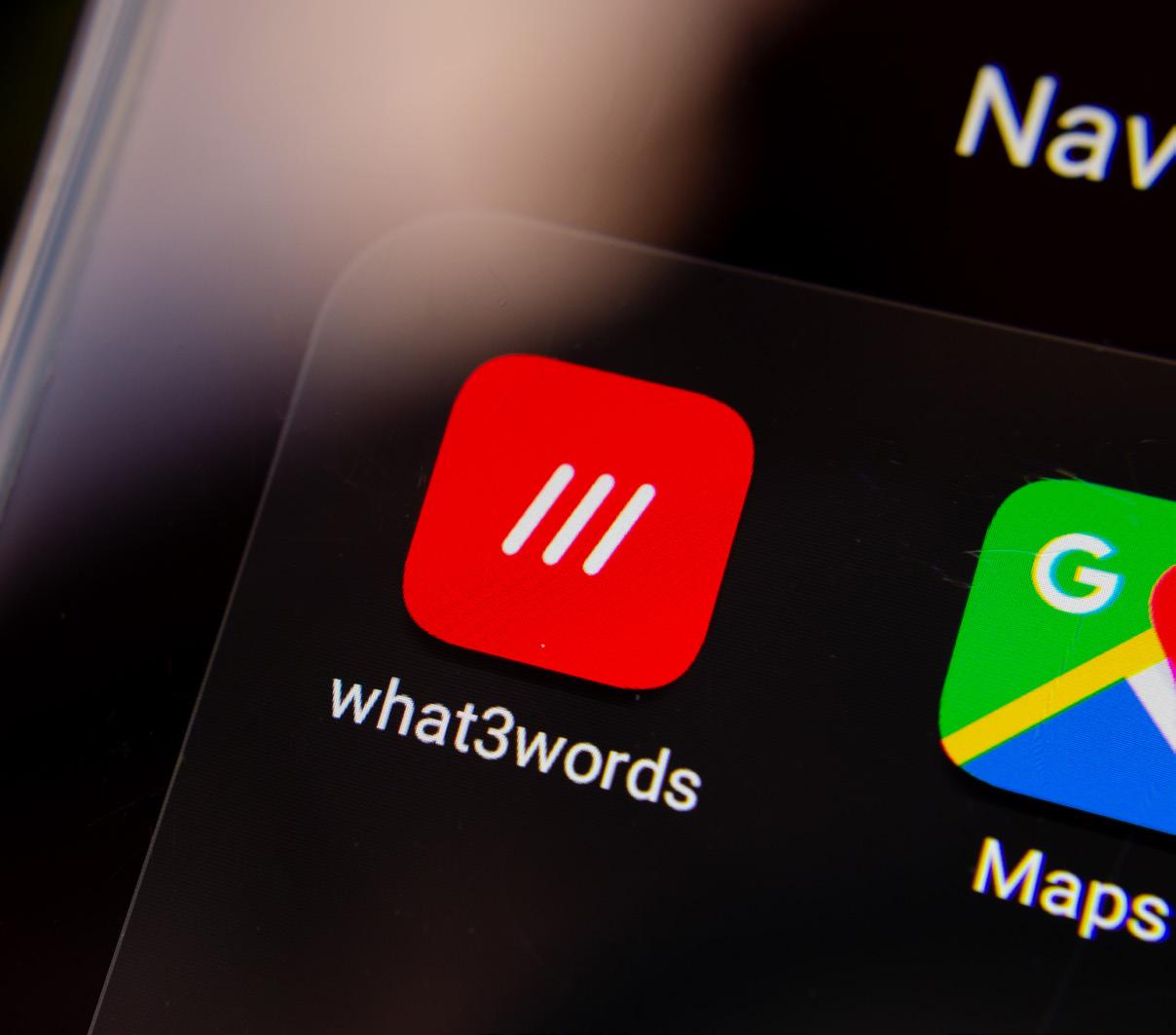
ENVIRONMENT TECH FOR GOOD 42
times what3words has been directly responsible for saving lives: a biker saved by rescue services after tumbling down a steep embankment half a mile away from the nearest road; two men being plucked from the sea after jumping into a harbour to save their dog. Such is the convenience of using what3words to accurately locate people and incidents, it is now estimated to be integrated into the dispatch systems of more than 85 percent of emergency services in the UK.
NGOs and charities have also been using the app to locate aid stations,
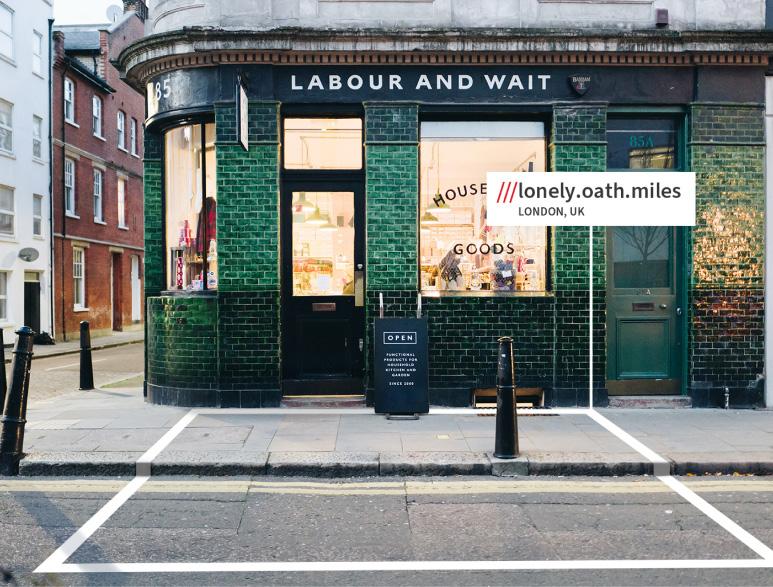
find people in floods or other disaster zones, and give people identifiable addresses in refugee camps.
Future proliferation
Looking forward, Rhys Jones wants the company to reach a ubiquitous level when it comes to everyday navigation, wherever the user may be. In the UK, the company feels it has put in the hard yards, built an ecosystem, and is reach ing a tipping point of achieving critical mass. It now wants to replicate that success in other key markets such as USA, Germany and India.
WHAT3WORDS ISSUE 21 43
With that aim of ubiquity comes the challenge of focus, and the compa ny’s need to balance commercial and free-use applications across the vast array of sectors in which the app is used. Ultimately, what3words wants members of the public to see three random words alongside the compa ny’s three red slashes on a building and instantly know what it means.
“Basically, we want to become a globally accepted way of talking about location,” he says.
“Yes, we do have to be careful we don’t tip too far onto one side as we are a commercial business that has a huge humanitarian benefit, but we’re managing well so far. The car industry is particularly interesting for us because we have recently signed our 13th partnership with an automotive related company. We already have the likes of Mitsubishi, Tata Motors in India, and Triumph Motorcycles to go alongside the likes of Mercedes-Benz and Suburu, so that’s proved very fruitful

ENVIRONMENT TECH FOR GOOD 44
Our team have a passion for the business, doing good, and seeing our system being used for good”
for us because we solve a real-world challenge for them.
“Logistics and delivery companies are another big focus for the company because it’s also a big efficiency play. People will get increasing exposure to what3words in their day jobs in the future and will then hopefully discover how helpful the app can be and genuinely think ‘hey, this is great’. In a nutshell, we want to make the world less frustrating, more efficient, and safer.”

A huge variety of use cases fit those three aims. What3words wants to make life less frustrating for pedestrians and car drivers, more efficient for delivery firms, and safer for emergency services and NGOs and the people they serve. From installing water pumps in Botswana to delivering a pizza in Boston - the same app benefits so many different facets of life.
The vision is there, now it is up to Rhys Jones and his team to continue getting the message out there about what3words and continue redefining the way we treat navigation and location. He explains: “Some people might be used to always doing it a certain way, where they think street addresses or a long-winded description is good enough; come to the third house with the red door past where the old mango tree used to be - that kind of thing. Maybe it’s hard for them to see what’s wrong with that because they know where it is, but the other person trying to get there has trouble.
“That’s where we come in, and we want to permeate into that situation where it’s second nature for someone to use what3words.
“We’ve got there in the UK where your housemate is using it, your boss is using it, people are aware of it. We want to expand the what3words usefulness even further now, with more languages, more integrations with cars, and continue that journey.”
“Our team have a passion for the business, doing good, and seeing our system being used for good. We’ve got a Slack channel where we post all the emergency service stories. So, it’s always pretty humbling to scroll through that channel and just see the life-changing uses. It’s incredibly moti vating for everybody.”
ISSUE 21 WHAT3WORDS 45
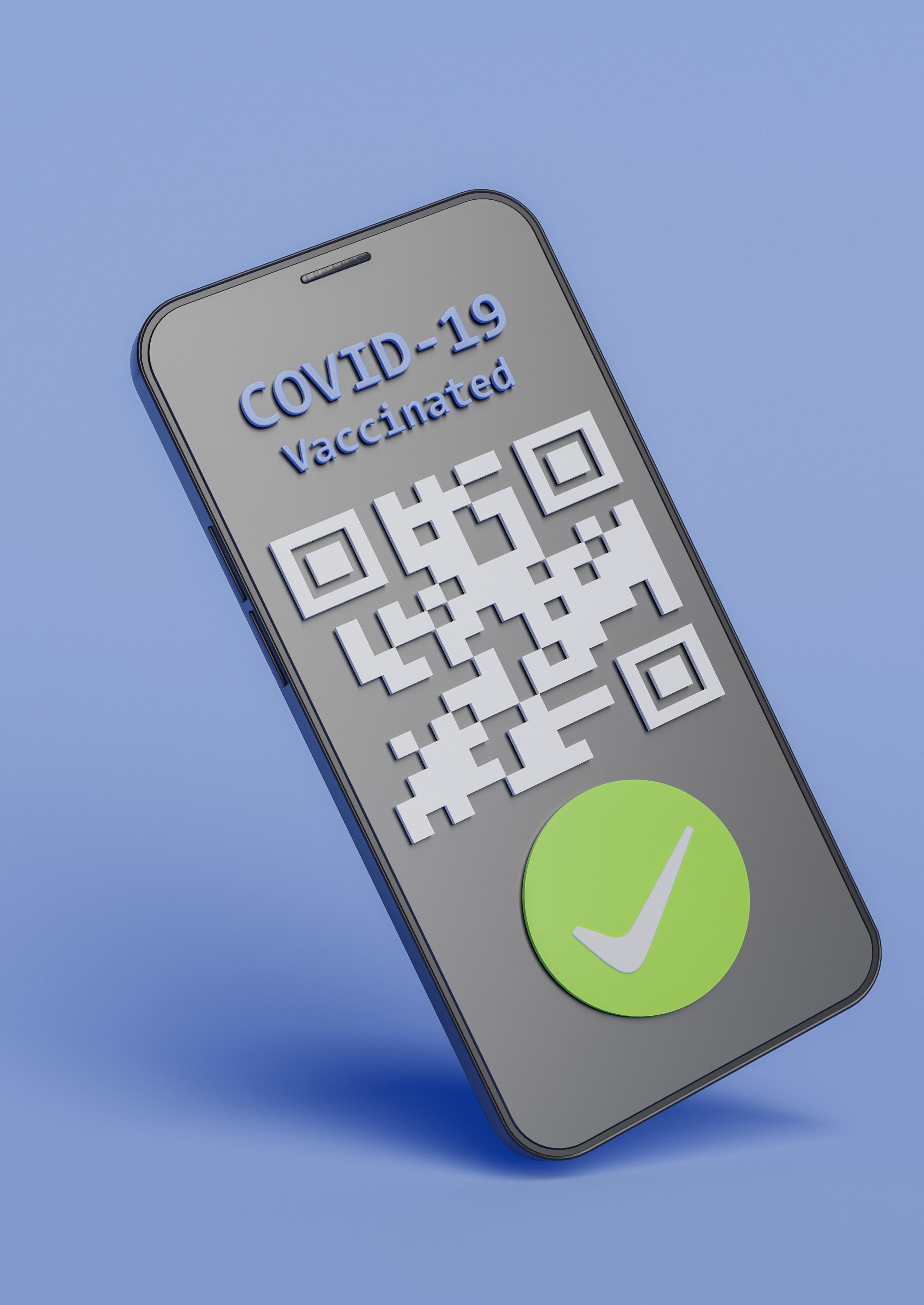
CASE STUDY TECH FOR GOOD 46
A HE ALT H CARE
T R A N S F O R M AT I O N
COVID-19 forced healthcare systems around the world to transform. We speak to Northern Ireland’s Health and Social Care team to find out how digital technology was used to protect the population during an unprecedented time

PROJECT
DIRECTOR: Romily Broad AUTHOR: Beatriz Valero de Urquía VIDEOGRAPHER: Wendy MacKinnon, Joe Clarke-Blomfield
HSCNI ISSUE 21 47
In March 2020, the world came to a halt. But when COVID reached the shores of Northern Ireland, it encountered resistance in its healthcare system, which worked tirelessly to protect its population. Northern Ireland is no stranger to innova tion in healthcare. It was the first UK region to put in place a longitudinal patient care record for its 1.89 million residents. Two years ago, faced with a sudden crisis, the Department for Health and Social Care Northern Ireland (HSCNI), relied once again on digital solutions to save lives.
“This is the most challenging public health situation that we have seen in a generation,” Professor Sir Michael McBride, Chief Medical Officer at HSCNI, tells Tech For Good. “We moved at a very rapid pace to put in place a series of mitigations to detect infection in the community, develop
vaccines, and adapt the health service so that we could protect the public, particularly those who are most vulnerable.”
To respond to the demands of the pandemic, HSCNI embarked on the first major development of cloud technology into the NHS in Northern Ireland. From data analytics to COVID-tracking, it developed a series of citizen-facing digitally enabled services that became the backbone of the country’s pandemic response. Since then, Northern Ireland’s healthcare service has been transformed.
Tracing contacts
How do you contain the spread of an unknown highly contagious virus?

Northern Ireland’s contact-tracing programme was hailed a huge success. It became the first region in the UK to

CASE STUDY TECH FOR GOOD 48
release a contact-tracing app, which was praised for its interoperability and privacy features. But the app was only a small part of the huge range of systems that HSCNI developed to protect its citizens and track the progress of the pandemic.













































“I take a huge amount of pride in our response and, by extension, the tracking system,” says Richard Pengelly, Permanent Secretary of the Department of Health, and Chief Executive of HSCNI. “If you’re going to battle a pandemic, you need to gather as much data as possible about its evolution. Track and Trace fundamentally allowed us to do that in realtime, so it was absolutely central to our response to the virus.”
When the pandemic hit Northern Ireland in March 2020, HSCNI’s digital team took on the task of building the tools that would become the basis of the country’s pandemic response. And thus, the first iteration of the Test and Trace programme was born and deployed in under a week. Since then, the system has been in continuous evolution, adapting to meet the changing demands of the virus and each of its variants.
“The digital Test, Trace, and Protect programme that we set up to support clinical colleagues was built at a level, at a scale, at a volume that was completely unprecedented,” says Dan West, Chief Digital Information Officer at HSCNI. “It was really important for us to embrace
HSCNI ISSUE 21 49
cloud in a way that we hadn’t done previ ously, because it allowed us to meet the needs of our public health colleagues at a rate that would have been very difficult to do with other technologies.”
Built on Microsoft Cloud products and solutions with Kainos’ support, HSCNI’s Test and Trace system was able to consume hundreds of thousands of test results from labs and hospitals across the country at record speed, triggering which citizens needed to be contacted by Test and Trace. Moreover, the system was scalable and interoperable, which allowed West’s team to integrate it with the government’s SMS notification system and data
analytics platforms, something that proved vital to control the spread of disease.
During those months, every minute made a difference. The Test and Trace system was the start of a new way of working at HSCNI, one that was cloudbased and able to anticipate citizens’ needs as well as respond to changing circumstances at speed.
“We adopted a very much agile meth odology,” says Eddie Ritson, HSCNI Programme Director. “It was a whole new way of working, trying to do a job which hadn’t been done before. The policy was changing rapidly, and we were having to keep pace.
CASE STUDY TECH FOR GOOD 50


This is the most challenging public health situation that we have seen in a generation”
HSCNI ISSUE 21 51
Professor Sir Michael McBride
“It felt like we were doing an important job. It felt that we were doing something which was very much at the centre of the public health response to a critical situation.”
Pete Struthers, Healthcare CTO at Microsoft Ireland, adds: “They achieved something that hasn’t been achieved in healthcare before. The speed that we had this up and running and we could start contacting close contacts had an impact on people’s lives.”

Alongside Test and Trace, HSCNI devel oped a whole range of services to support its contact tracing efforts. These included the symptom-checker CovidCare app and the proximity app StopCovid. The latter had the same architecture as the Republic of Ireland’s app, in what became a crosscountry effort to protect the epidemiological unit of the island. In a time of tragedy, the systems provided citizens with a sense of control.

“The ability for people to use a series of digital supports to do their bit to reduce the chance of infection and to learn about the virus through interacting with the digital systems that we developed, I think was very empowering to the citizens of Northern Ireland,” says Professor Sir McBride.
Vaccinating a country
Six months after the first lockdown, hope arrived in the form of COVID-19 vaccines. However, it also brought forth a new chal lenge: the need to vaccinate almost two million people, all at once.
“The vaccine rollout programme was the largest and fastest vaccine deployment in the history of Northern Ireland, and, frankly, in many countries around the world,” West says. “The teams needed to embrace that new agile way of working to protect the population and in particular, clinically vulnerable individuals and residents of care homes.”
Given the success of the Test and Trace solution, HSCNI decided to use similar

CASE STUDY TECH FOR GOOD 52
Claire Buchner
tools for their vaccine management system. It was composed of three overlapping major products, a public-facing booking platform, a clinical recording solution, and a data analytics database.

Since the system was to be used by thousands of clinicians in different locations, it had to be both simple and scalable. Initially, HSCNI designed different applications for GP practices, pharmacies, and trusts, but those have now been merged into a single appli cation that can be accessed through a smartphone, a tablet, or a web server. The ability to have all that information in one place proved absolutely vital to the vaccination campaign, which has already delivered 3.75 million doses
and immunised 70.5% of the country’s population.
“The vaccine management system has been a gamechanger,” says Claire Buchner, Assistant Director of Digital Health and Nursing, HSCNI. “The programme potentially wouldn’t have been as successful without it, and it’s due to the fact that we have all of the data in one place.

“It didn’t matter whether a GP, a pharmacist or a care home had given a vaccine. All of that data was in the same place, at your fingertips. We’ve been able to show people the advantages of recording at the point of care. It has been a real success.”
Making sure the data was entered correctly and the processes on-site matched what was designed in the user
HSCNI ISSUE 21 53


If you’re going to battle a pandemic, you need to gather as much data as possible about its evolution. Track and Trace fundamentally allowed us to do that in real-time”
CASE STUDY TECH FOR GOOD 54
Richard Pengelly
journey, proved to be more challenging than expected. However, the benefits of the digital approach soon became clear. Somebody could be on a shopping trip to Belfast and decide to get vaccinated, and the clinician attending them would be able to immediately access their medical history. In addition, the system also records data regarding vaccine batches and side effects to ensure that the rollout is done in a fast and safe way.

“The biggest benefit to the patient is, without doubt, the single view of the patient,” says Gillian Armour, Principal Delivery Manager at Kainos. The Belfastheadquartered organisation uses digital technology to help businesses overcome their biggest challenges, positively impacting millions of people across the globe. “It gives the patient choice, and it gives the clinician comfort. I think that has been quite transformative.”
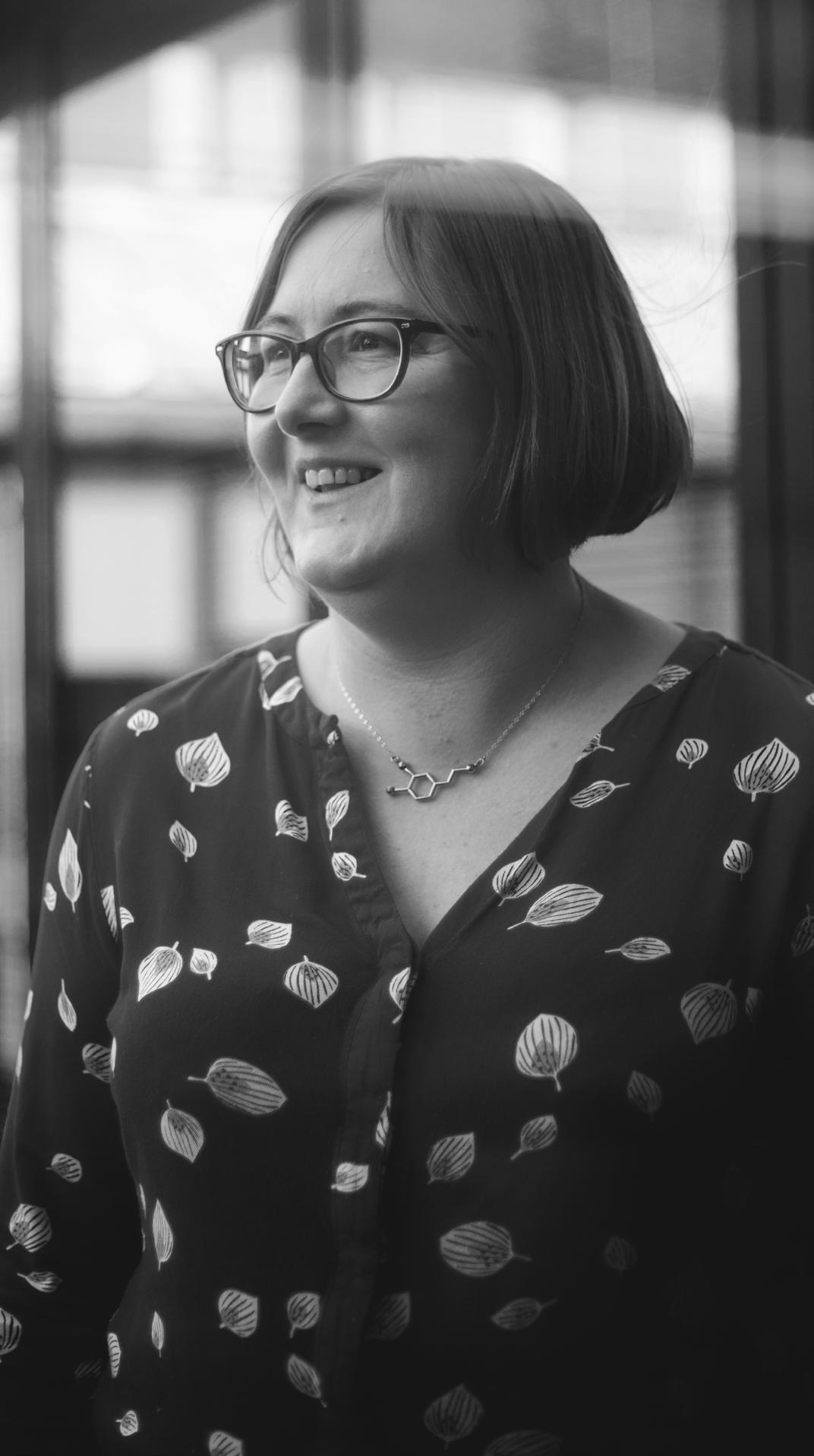

Data was also vital to ensure there was equal access to vaccines. Through the Azure Synapse data analytics solutions, HSCNI was able to identify low-uptake groups, such as pregnant people and people living in low socio-economic areas and mobilise resources and campaigns to encourage them to get their vaccines.
“We had not done that in healthcare before,” says Professor Sir McBride. “I look at the vaccine management system twice a day, every day. We use it to interrogate where we’ve had low vaccine uptake, so
HSCNI ISSUE 21 55
Gillian Armour
we can put in place special arrangements and pop-up clinics. It’s been crucially important in determining how we ensure that there’s vaccine equity.”
A collaborative success Technology has been key to the success of Northern Ireland’s pandemic response. However, none of that would have been pos sible without the people that worked inces santly for two years to make it succeed, both from public and private organisations.
“We have really talented people,” Pengelly says. “We can’t automate their brain out of our system. It has to be a partnership between the public sector and the private sector; and a partnership between human intelligence and artificial intelligence.”
The ecosystem created by HSCNI fostered an atmosphere of innovation
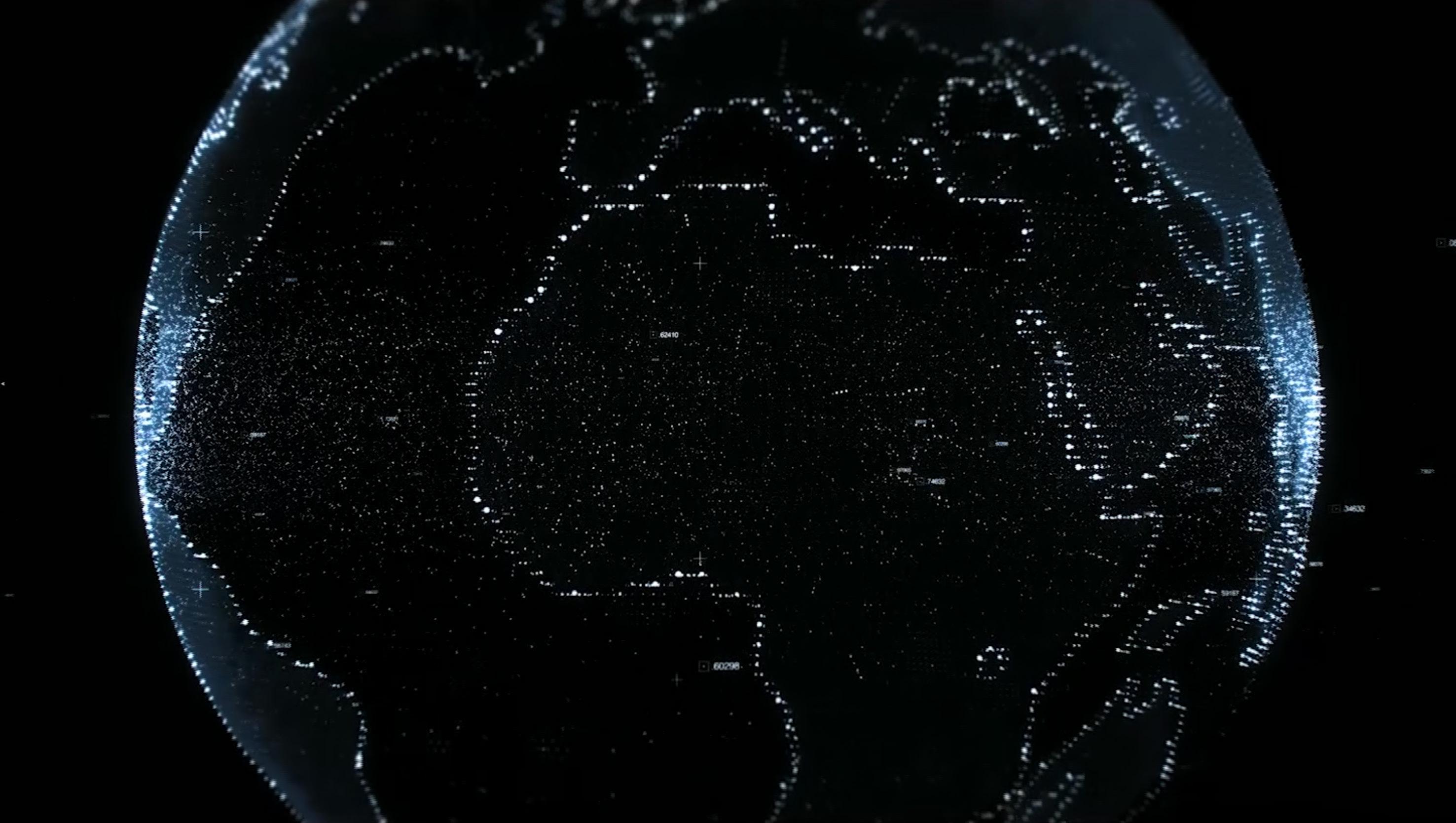

and mutual collaboration, in which private organisations came together to respond to their community’s needs. Among these was Kainos. HSCNI lever aged its expertise to build the services in which the Microsoft stack was deployed, from the contact-tracing platform to the vaccine management systems, as well as providing advice regarding how to deploy cloud technologies and agile delivery techniques.
“For us to have developed the products we did in the time we did, required private sector expertise,” Ritson says. “Kainos responded quickly to our set of requirements, as did Microsoft. We deployed Microsoft’s Dynamics 365 Case Management solution, and with Kainos’ help, we were able to change and adapt it to our own particular set of circumstances.”
CASE STUDY TECH FOR GOOD 56
Dan West
West adds: “The speed with which we’ve had to deliver new technology solutions has been completely unprecedented. We wouldn’t have been able to do that without a network of partners who were absolutely committed to delivering what society here in Northern Ireland needed.”
It was the strength of Microsoft and Kainos’ long-standing strategic relationship that allowed both organisations to spring into action when HSCNI required technical expertise. Microsoft’s Dynamics 365 and its Azure Synapse services were the basis of most of Northern Ireland’s pandemic response systems, from the

Test and Trace platform to the vaccine management systems.
The project has been award-winning, receiving the Microsoft Partner of the Year Award for Healthcare in Ireland in 2020, demonstrating the strength of the Kainos and Microsoft partnership.
“We made a decision that the solution was going to use Microsoft technology so we engaged and worked with the Microsoft team from the very start,” says Adam Donnelly, Strategic Alliance Director at

The vaccine rollout programme was the largest and fastest vaccine deployment in the history of Northern Ireland, and, frankly, in many countries around the world”
HSCNI ISSUE 21 57
Kainos. “There was a key moment for me when we were at a difficult time in a project, and I asked one of the senior people from Microsoft some questions. He said to me, ‘Whatever help you need, you will get it’. And, for us, that really summed it up.”

The future is data
All experts agree that the future will not only be digital but also data-driven.
A common thread through HSCNI’s pandemic response has been the role that data analytics has played in tracking the spread of the pandemic and transforming the organisation’s ways of working. As the world moves into the endemic phase of the virus, it is hoped that COVID will become a faint memory, but its legacy will be unforgettable.

CASE STUDY TECH FOR GOOD 58
Adam Donnelly
“Our ability to analyse data has been critical,” West says. “We have been able to ingest different datasets and then use advanced data science to monitor the delivery of our services and understand the progress of the virus.
“In the future, we need to collect data once. And we need to use it relentlessly across organisations to ensure that we’re delivering the best possible patient services, personalised to the individual around their clinical needs. That’s a big journey, but it’s really exciting.”
At the strategic level, data analytics solutions were absolutely critical. HSCNI’s COVID dashboard allowed the organisa tion to access daily information about the progress of the pandemic. That allowed


senior officials to calculate the R number and make decisions about the restrictions that were put in place to control the epidemic.
When vaccines were limited, data analytics solutions allowed HSCNI to look at the data regarding uptake rates and hospital admissions and deploy mobile testing units in the communities that were most in need. Moreover, HSCNI also took a risk-averse approach to the deployment of data analytics solutions with the goal of ensuring data safety.
“This is your data, and my data,” Professor Sir McBride says. “It’s hugely important that the public has absolute confidence that we respect that.”
Looking forward, HSCNI is working towards a future where healthcare
HSCNI ISSUE 21 59

It has to be a partnership between the public sector and the private sector; and a partnership between human intelligence and artificial intelligence”
CASE STUDY TECH FOR GOOD 60
Richard Pengelly
systems are robust and data analytics are leveraged every day to provide patients with personalised care. From clinician burnout to mental health, healthcare services still have many chal lenges ahead. This is the reason HSCNI is embarking on a five-year portfolio of change, that aims to recognise how important digital, data and technology is in delivering the next generation of health and social care services.
“I think only the fullness of time will allow the story of Northern Ireland to be told properly,” Pengelly says. “It’s a magnificent story. In five years, people will access healthcare in a different way. They’ll look at records in a different way. I think we’ll see a noticeable shift in population health and maybe someday we’ll look back and think: ‘COVID was a difficult time, but it was a trigger point for some real qualitative improvements in healthcare.’”
The pandemic provoked a leap forward in the use of technology in healthcare systems. Now, the genie is out of the bottle. In the years to come, digital solutions will continue to help healthcare organisations provide personalised care and improve the quality of life of the people of Northern Ireland - and the world - creating a future where doctors and data are both fundamental in the fight against disease.

HSCNI ISSUE 21 61
SUPPLYING SUSTAINABLY SUPPLYING
 AUTHOR: Beatriz Valero de Urquía
Henrik Smedberg, Head of Intelligent Spend Management UKI, SAP, and Mick Jackson, Founder of WildHearts Group, sit down with Tech For Good to discuss how companies and social enterprises can work together to build better supply chains.
AUTHOR: Beatriz Valero de Urquía
Henrik Smedberg, Head of Intelligent Spend Management UKI, SAP, and Mick Jackson, Founder of WildHearts Group, sit down with Tech For Good to discuss how companies and social enterprises can work together to build better supply chains.
ENVIRONMENT TECH FOR GOOD 62

ISSUE 21 SUPPLYING SUSTAINABLY 63
TFG: Why is it increasingly important that businesses ensure they have full visibility into their supply chains?
Henrik: The past few years have been some of the most turbulent for supply chains in decades. We’ve witnessed the impact of the pandemic, Brexit, conlfict and incidences like the blockage of the Suez Canal on availa bility of goods. But we’ve also seen a real shift in consumer beliefs and habits around sustainability and ethics, which has also had an impact on how brands need to address their supply chains.
Our research showed 83% of consumers would be willing to compromise for ethically sourced products. As
such, the reasons why businesses need full visibility into their supply chains are twofold: first, to be able to mitigate the risks associated with both planned, and unplanned, macro-economic events, and second, to be able to address the evolving demands of their customers.
TFG: How have increased awareness of social and environmental impact as well as supply chain disruptions changed customer behaviour?
Mick: Increased awareness of issues like Ocean or single-use plastic, envi ronmental degradation in the pursuit of product production or Carbon emissions in the production and delivery of consumer goods is only going to intensify

ENVIRONMENT TECH FOR GOOD 64
Mick Jackson Founder of WildHearts Group
and become more transparent. Now more than ever, consumers, either directly, or as part of their day-to day engagement with their employers, expect the businesses they buy from and work for to mirror their personal values and will make purchasing decisions based on these outcomes.
TFG: How can procurement leaders use technology to provide increased visibility into their supply chain makeup?
Henrik: Leveraging cloud-based technology helps businesses move away from a traditional linear supply chain model to a digital supply network. Unlike linear supply chains, supply networks shift away from singular, point-to-point processes to a many-to-many structure that enables 360-degree visibility. Once an organisation is connected to a digital network, it becomes both a buyer and a supplier and gains broad visibility into the interconnected operations of its trading partners. Interestingly, a lack of technology investment by companies was cited by a small number of consumers in our research as a reason for supply chain shortages over recent months, pointing to the growing awareness that cloud-based technologies can provide the transpar ency needed to assess and collaborate with trading partners, allowing organisations to align spend decisions with their strategy and purpose.
supply chains in decades”
Smedberg Head of Intelligent Spend Management UKI, SAP

The past two years have been some of the most turbulent for
ISSUE 21 SUPPLYING SUSTAINABLY 65
Henrik
TFG: What data can be gleaned from using technologies to continually analyse the supplier ecosystem?
Henrik: Digital supply networks leverage technology and data analytics to provide a continuous flow of informa tion, allowing business leaders to gain holistic insights into all business areas. Not only does this help to respond more quickly to demand and address unforeseen circumstances, but it also allows organisations to understand what trading partners they are transacting with and their practices, and it’s this data that is important here; it’s no good setting sustainable targets for your business if the partners you operate with don’t adhere to them.

TFG: How is SAP supporting this transition?
Henrik: SAP Business Network strives to connect all trading partners through a single portal- making collab oration easier with a common data model, services, intelligence and a data analytics engine. Using data analytics, our customers can analyse large amounts of data much more quickly, allowing them to make real-time data-led decisions. With more informa tion available on supply and demand, inventory levels, movement of goods, and so on, trading partners can better respond to both emerging risks, but also
ENVIRONMENT TECH FOR GOOD 66
The next generation of successful companies won’t be search engines or social media companies, they’ll be sustainable, scalable innovators”
changing consumer demands of the brands they engage with.
TFG: What role will social enterprises play in changing supply chains?

Mick: Social enterprises are crucial to the modernisation and development of supply chains. Like traditional businesses, they aim to make a profit but it’s what they do with their profits that sets them apart - reinvesting or donating them to create positive social change. Social enterprises exist in our commu nities and on our high streets, from coffee shops and cinemas to pubs, leisure centres, banks and bus companies. By selling goods and services in the open market, social enterprises create employment and reinvest their profits back into their business or the
local community. This allows them to tackle social problems, improve people’s life chances, provide training and employment opportunities for those furthest from the market, support communities and help the environment. They’re creating jobs and opportu nities for those most marginalised from the workforce, transforming the communities they work in and making the Sustainable Development Goals a reality. It’s business for good and when they profit, society profits.
TFG:
Henrik: Digital procurement solutions can absolutely support environmental, social and governance
How can procurement leaders use technology to engage with ethical and sustainable partners?
SUPPLYING SUSTAINABLY ISSUE 21 67
(ESG) goals, which almost certainly includes working with more ethical and sustainable partners - not only because it’s the right thing to do, but because consumers demand it. With the data visibility afforded by supply networks, businesses can ensure a supplier they engage with is aligned with them ethically and environmen tally. Solutions like our SAP Ariba Discovery capability also allow busi nesses to post sourcing needs and then seek new suppliers that meet their corporate standards, which is another way in which businesses can engage with new partners.
TFG: How is WildHearts driving social change?
Mick: WildHearts Group is a portfolio of companies that, through their activities and profits, create global social change. The profits from our group help change lives locally and globally. Our social initiatives are diverse; from addressing social mobility in the UK by equipping young people with key development and employability skills, to addressing gender inequality in the developing world through our StartHer Strategy. As part of award-winning enterprise-education program Micro-Tyco, Wild Hearts recently held the world’s largest

ENVIRONMENT TECH FOR GOOD 68
youth-led climate change summit during COP 26, where over 50,000 school kids from 6 continents learned how to use the United Nations Sustainable Devel opment Goals as a framework to tackle pressing environmental and social issues in their own communities.
companies, they’ll be sustainable, scalable innovators that are focused on playing their part in having sustainable and transparent supply chains, helping the world decarbonise and making the delivery of social impact in our commu nities business as usual. In addition, businesses not addressing these crucial consumer demands may also have a problem with attracting the right talent. Now more than ever, companies need to embrace the disruptive socio-economic transition that is happening all around us and use this to develop a greener, more sustainable and ultimately a more profitable outcome for everyone.
TFG: What will the supply chains of the future look like?

TFG: What are the dangers of companies not addressing the new customer demands?
Mick: Companies that aren’t addressing new consumer demands are already at a competitive disadvantage. The next generation of successful companies won’t be search engines or social media
Henrik: With our research showing that 79% of consumers are more aware of how supply chains impact the availability of products than before the pandemic, there is increased pressure on procurement leaders. In order to both better mitigate risk, but also meet consumer demand, supply chains of the future must become intelligent and collaborative networks based on cloud-based technologies. Only then will they be able to mitigate potential shortages and, importantly, ensure a sustainable and ethical end-to-end supply network.
ISSUE 21 SUPPLYING SUSTAINABLY 69
HOW TO BUILD PUBLIC-SECTOR TRUST IN AI
Interest in the power of AI to transform public services has surged in the shadow of health and economic crises. But how can the public sector move quickly to embrace its benefits in a trustworthy way? Tech For Good speaks to experts from AWS and its close partner Kainos to discuss.
INTERVIEW BY: Romily Broad
PUBLIC SECTOR TECH FOR GOOD 70
ISSUE 21 AI IN THE PUBLIC SECTOR 71
Piers Campbell
Head of Technology –Data & AI Practice

TECH FOR GOOD
Tell us a little about yourselves.
Piers Campbell: I’m head of tech nology for Kainos within our data and AI practice. My role as head of technology spans everything we do, from data engineering and architecture all the way through to machine learning and arti ficial intelligence. My role tends about early engagement with our customers, helping them understand what AI and data can do for them, and then making sure that we deliver the right things at the right time for the assurance of the projects that we currently deliver.
Himanshu Sahni: My job is to essen tially help our customers in the public
Himanshu Sahni

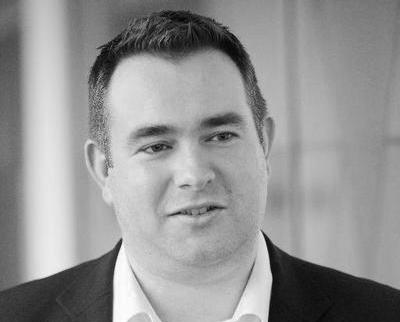
AI & ML Business Development Lead, EMEA Public Sector
sector space adopt AI and machine learning services, whether it’s helping them understand their products better, or look at breaking down their problems and understanding what’s the best way to help them.
TFG: What we are talking about today is how we can build trust in AI in the public sector. What are the first things you would do to begin addressing that topic?
PC: The first piece is around education and knowledge. I think there’s still a lot of misunderstanding and ignorance out there, and certainly in the public sector, about what AI is and what it isn’t
PUBLIC SECTOR TECH FOR GOOD 72
and how it’s going to be used. For us it’s about working with senior directors across the public sector to help them understand the kind of benefits they can get from AI. But also to understand where the right use cases are and to go on baby steps. It’s a learning journey. It’s about how we make sure we’re providing a signposted roadmap to help them adopt AI and understand the chal lenges and bring it in, in a very managed and carefully orchestrated way.
HS: I have very similar thoughts around that. People tend to trust things they understand. And if something appears as a black box - how does it do things? Where does it make deci sions for us? - those things are where education has a big role to play. We have come a long way in being able to explain how AI arrives at making certain decisions. The other aspect of trust is feasibility. How do I go about doing something that is not going to burn my fingers? As Piers suggested, it’s about identifying the right projects, and taking an iterative approach where we know there are definite gains to be had.
TFG: In that context, what sort of use cases should public sector organisations be looking at?





me the starting point for a lot of these organisations will be around optimiza tion on automation. It’s looking at things like natural language processing to help process documents and allow hundreds of caseworkers to be able to focus on higher value activities.
An example where we’ve worked closely with AWS was for HM Land Registry, helping them get away from spending up to 40 minutes assessing a particular case application down to three or four minutes.
So let’s not go after the really bleeding edge technologies of deep learning and bringing that in to make automated
PC: The public sector is struggling with reduced budgets and much higher demand on their resources. So for Piers
Campbell
When you start to look at some of the use cases with AI for social good, it’s absolutely phenomenal”
ISSUE 21 AI IN THE PUBLIC SECTOR 73
decisions that we can’t really unpick, when we don’t get the transparency we need. We need to build trust in AI, right? It’s by demonstrating where the impact can be made and showing the benefits that you get from it, and that becomes incremental.












































































































































HS: The intelligent document processing Piers mentioned is definitely a big area where you can find a lot of low hanging fruit and lots of proven cases. I would also say things like contact centre intelligence - being able to give them real-time analytics to make the people on the frontlines more effi cient and able to do more with less. Another thing I find quite popular is
around content management. So there’s lots of content, from text to videos to audio, being able to extract insights, extract metadata, and then make intelligent search available. A tangible example is where we worked with the National Crime Agency in the UK, where they were they were working on a very high-profile case. They were able to use machine learning technologies like document processing and content processing quickly to get more than 750 arrests. Two metric tonnes of a Class A and Class B drugs were recovered, as well as 77 firearms. And that was all possible because of the speed.
PUBLIC SECTOR TECH FOR GOOD 74

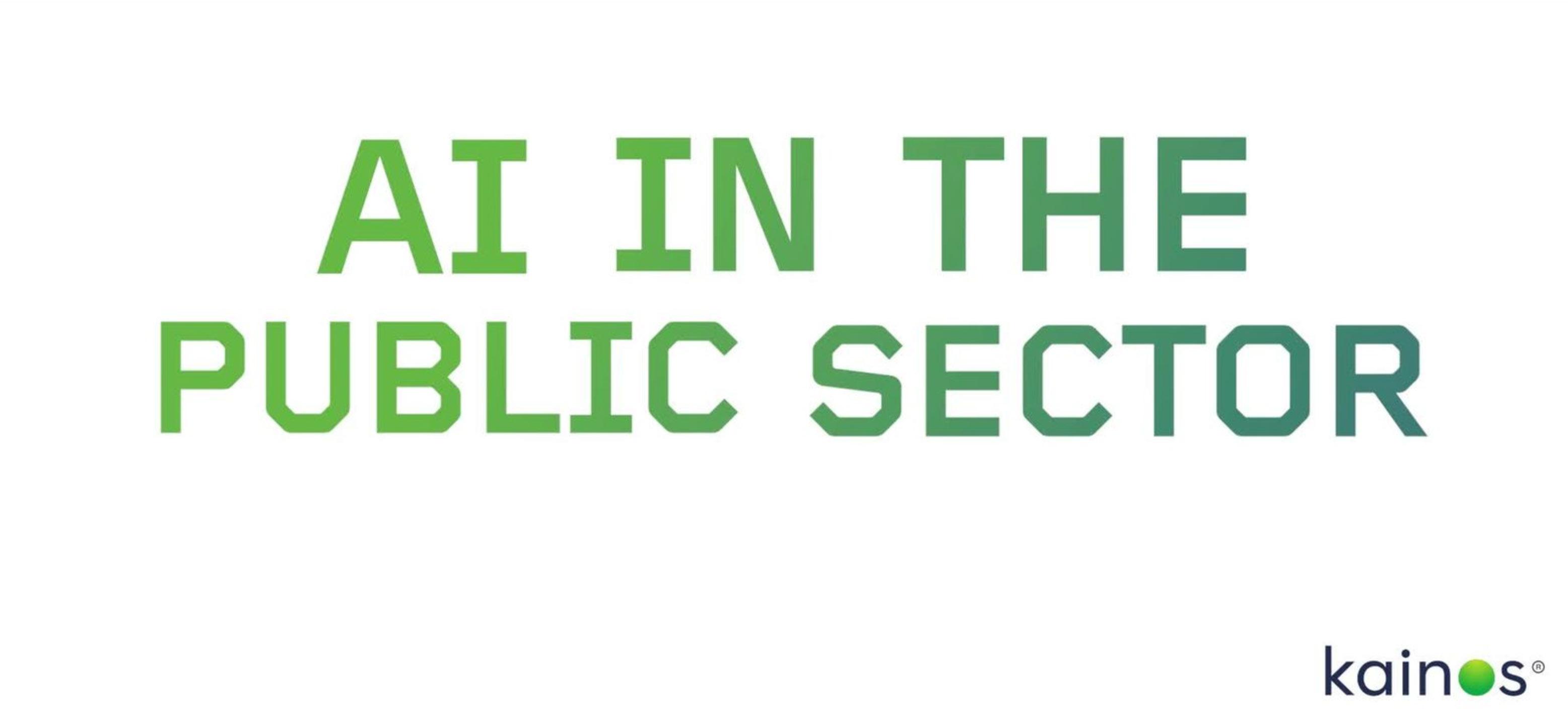


READ THE REPORT www.kainos.com/ trustinai Join the conversation #LetsTalkEthicalAI ISSUE 21 AI IN THE PUBLIC SECTOR 75
TFG: We’re talking about grabbing the low-hanging fruit first. But what are the sorts of AI fruit that people should avoid munching on straightaway?



HS: It is about identifying the problems which are feasible to do and where you are comfortable with an iterative approach. So quite often, that means keeping humans in the loop, where we do augmented AI, where we produce results and let the humans feel comfort able with them. Initially you get to accuracy levels of 80% to 90%, and then carry on iterating to take those accuracy levels to even higher numbers. But trying to aim for 99% accuracy upfront is where sometimes you fall into traps, which you should avoid.
PC: If we try to do too much too quickly, you risk a very negative reaction from citizens in the public sector. That’s why we’re seeing that move towards supporting humans. The AI is there to support the analysis, to support decision making. If we move really quickly to computer-says-no, or computer-says-yes, you would very quickly find people saying they don’t believe in the technology. Having a human decision maker in the loop is key, especially in the public sector.













































TFG: Do you find the perception of risk is a primary concern in the public sector, and one that can obscure the benefits early on?












PC: Absolutely. Let’s be blunt, every government department is there to try to provide really good quality services to citizens, and they want citizens to engage with them and get the benefit from those services. They don’t want to be implementing anything which is going to have a negative impact on that relationship with citizens. They’re very aware of what kind of lens citizens and the press are going put on it. There is that kind of immediate reaction in the tabloid press to blow anything with AI out of all proportion.
So they’re in a really difficult position trying to do more with less, realising AI can provide them with that, but








PUBLIC SECTOR TECH FOR GOOD 76
they’re going to be really cognizant of how that’s going to play in the broader media, even if the general public would be more open to it. It’s a really difficult balancing act. So again, it’s that kind of phased, slowly-slowly approach, and it’s great that we’re seeing that more across departments, but I think it is going to be a long burn.





HS: There is a lot more scrutiny in the public sector because there are a lot more stakeholders that you answer to. There is a general caution about being able to explain and have a measure of control. People will want to know that whatever is being done, even if it makes


their lives better, it is something that they are in control of and not vice versa. The way you inspire trust is by taking on challenges iteratively, where at every step we were able to explain how we arrive at decisions. In products that AWS develops, there are clear opt-out options available. These are important measures to build trust.

TFG: What examples can you share of really successful work in the public sector?







HS: I touched upon the National Crime Agency already, but in terms of policing I engage with some of the senior lead ership within the police forces across Europe. We cannot necessarily just apply technology straightaway, for example using facial recognition to identify crimi nals – that’s something where they have to be very careful. But then you look at so many other things. For example, police always conduct a lot of interviews and being able to take those interviews, transcribe them really quickly, rather than a human taking another day to go through that tediously, that process can be done now within minutes. That’s something that we’ve done with a police force in Europe, for example.
PC: A really good example of where we have worked closely with AWS to achieve something really tangible is with DVSA [Driver and Vehicle Stand
Himanshu Sahni
The way you inspire trust is by taking on challenges iteratively, where at every step we were able to explain how we arrive at decisions”
ISSUE 21 AI IN THE PUBLIC SECTOR 77
ards Agency]. We’ve been working with DVSA for a number of years now around the MOT system. One of the key requirements for DVSA is obviously to ensure that Britain’s roads stay safe. We worked with them over a period of six months, from concept right the way through to a live system, building out risk ratings. That essentially looks at the tester network across Britain who are doing the MOT tests. It uses the data that’s generated by them during that test, as well as some disciplinary infor mation and external sources, to build up a really rich picture of whether people are doing their jobs properly.


That’s been really beneficial for DVSA in terms of raising their hit rate. So instead of examiners travelling around
and hoping to find some poor practice or some malpractice, they’re now prepared with data that sends them in a particularly targeted direction.
We’re also working with DWP [Depart ment for Work and Pensions], where we’re working to look at how they can use their data in new ways, speeding up the processing of documents.
TFG: The COVID-19 pandemic stretched public sector resources like never before, and since then we have seen a change in how they work, and greater expectations on them to do more with less. How important can AI be in helping them deal with that?
PC: It’s tough to pick out benefits of COVID. But one of them was the changing working patterns for people. Another is a recognition of the part that that data and AI in particular can play in modernising services.
We have seen a massive speed up of interest in and demand for AI, of organisations wanting to explore things they maybe had on the backburner for six months. Delivering frontline services clearly took priority, but because they had to change the way in which they delivered, that’s really accelerated it. It’s absolutely phenomenal to see the interest rate across departments now, in really wanting to be innovative, and it feels in many ways as if they’re being
PUBLIC SECTOR TECH FOR GOOD 78
empowered to do that. Especially in the current climate, where we’re seeing 90,000 roles potentially cut across the across the civil service, there is going to be a need to be much more innovative and dynamic in terms of how they address some of these challenges.
HS: There are two areas - one is optimization, the other is innovation. Both of those things are now happening at the same time. When we are in an era of unprecedented inflation, that’s squeezing budgets, we absolutely need to optimise to get on top of it. And then there’s also innovation, where you’re looking at some really creative solutions,
such as smart parking; smart cities is a need of the hour, where with IoT sensors and algorithms like reinforcement learning, you’re able to come up with solutions which are suitable for the public sector.



TFG: So AI helping us meet our public-sector challenges is less about driving new revenue, than it is about finding solutions for social good.

















PC: Absolutely. When you start to look at some of the use cases with AI for social good, it’s absolutely phenomenal. Whether it’s the UN looking using video analytics to understand crops and why

ISSUE 21 AI IN THE PUBLIC SECTOR 79
they’re failing, or looking at hunger across Africa, it’s really interesting to see some of those use cases and how it’s able to be transformative.
And Himanshu talked about just making life easier for citizens. It’s amazing when we look at that parking example, or whether it’s anything to do with our services, being more available to us. We’re starting to see those kind of recommendation engines start to come in to everything that we do, and personalization coming into not just our Netflix or Amazon account, but also coming into our healthcare and banking. That kind of optimization coupled with innovation, and really looking for uses for AI which are not all about profit, are going to be hugely impactful.
TFG: Attaining all these benefits is the goal, but how do we make sure we do that in a responsible and trustworthy way?



































HS: It’s about doing it in a responsible way within their organisation from the start. The way AWS approaches this is we have a Department of Global Practice, which essentially looks at responsible AI. They are building a platform where we can essentially help them design a responsible AI framework for their organisations so they feel comfortable. No matter which solution they choose for AI and ML oriented


















































































































PUBLIC SECTOR TECH FOR GOOD 80
capabilities, it is done in a way that is safe, secure, and trustworthy.










PC: Himanshu’s point there is very important about that responsible AI wrapper. Building that kind of ethical framework lets them understand the risks and what safeguards to put in place to manage that risk. The other part of that is once you’ve got that in place, and you’re actually wanting to build that trust, it’s about engaging early with stakeholders. For us, that’s about pilot groups and going through the Agile delivery methods from discovery through to alpha and beta, and then refining the product and delivering AI in a way that’s not scary but very acces sible to frontline staff. How you go about delivering it and bringing stakeholders and end users on that journey so they feel it’s something that they’re built into, not something that’s being done to them, is crucial.
TFG: How important is very senior leadership in building trust in AI?





PC: Having that brave champion that is willing to fight the fight and stand up for the benefits that can come, and fight for that kind of innovation within their organisation, is essential. And it’s also to get that communications plan right from the off, which says we’re not going to do something super-secret-squirrel over here, we’re going to actually develop this in the open, we’re going to be very trans parent about what the risks are, but also what the benefits can be as well. Without that senior, very influential sponsor, it becomes an even tougher uphill battle. But I think what we’re starting to see is a lot of those senior executives wanting to come forward looking for those advan tages, because they’re in a really hard place now with all the challenges that they’ve got. There’s a recognition that innovation and change is essential.

ISSUE 21 AI IN THE PUBLIC SECTOR 81

TALK TO US hello@vwda.co.uk






































 AUTHOR: Sam Jermy
AUTHOR: Sam Jermy























































 AUTHOR: Beatriz Valero de Urquía
Henrik Smedberg, Head of Intelligent Spend Management UKI, SAP, and Mick Jackson, Founder of WildHearts Group, sit down with Tech For Good to discuss how companies and social enterprises can work together to build better supply chains.
AUTHOR: Beatriz Valero de Urquía
Henrik Smedberg, Head of Intelligent Spend Management UKI, SAP, and Mick Jackson, Founder of WildHearts Group, sit down with Tech For Good to discuss how companies and social enterprises can work together to build better supply chains.


















































